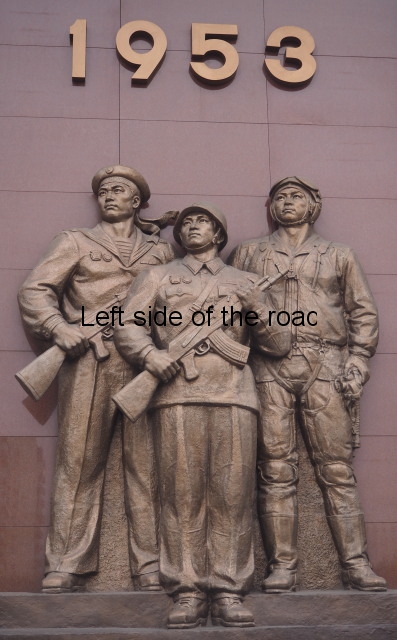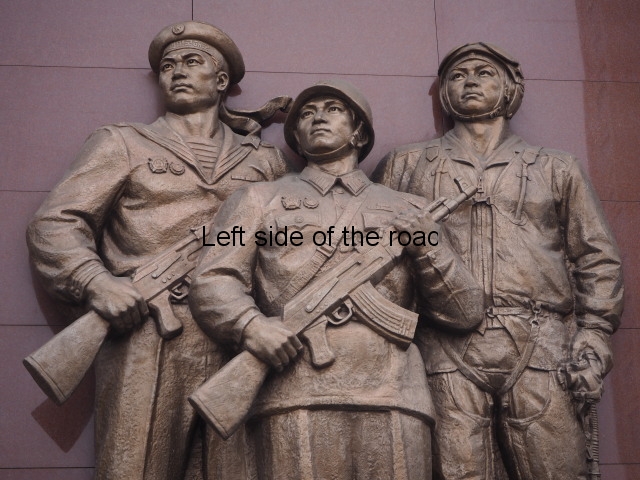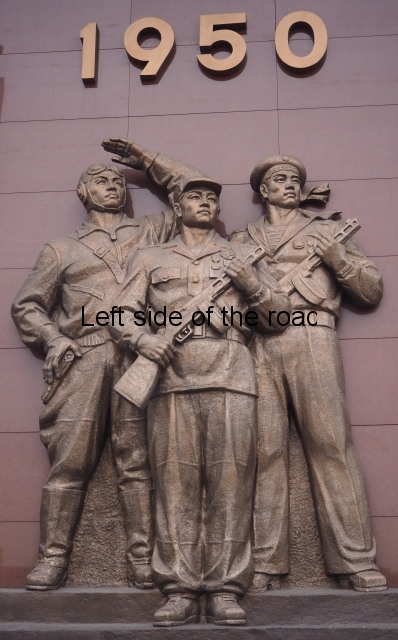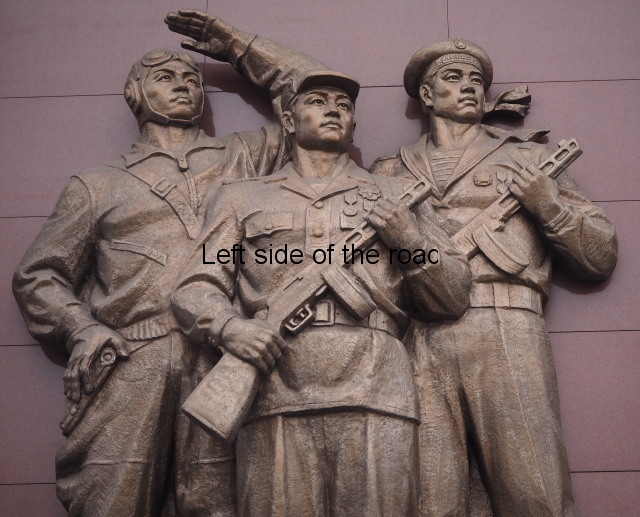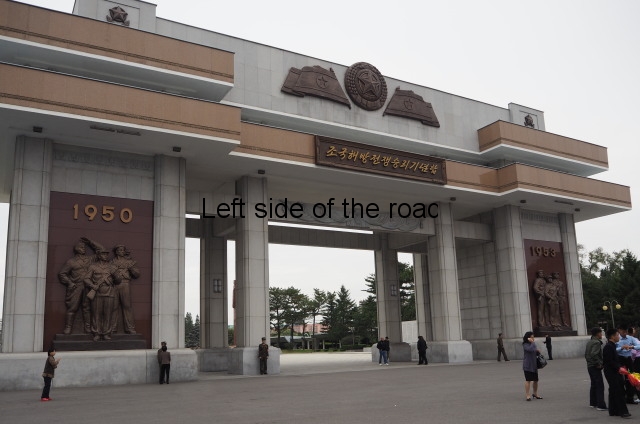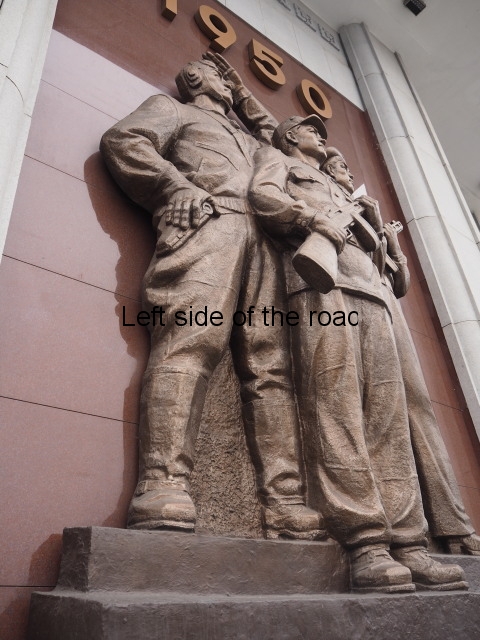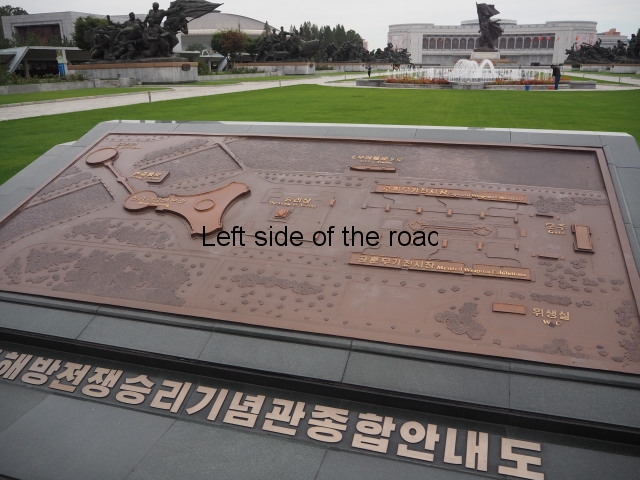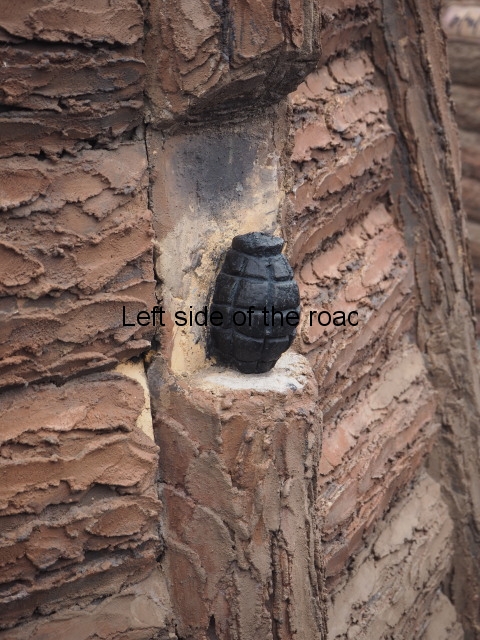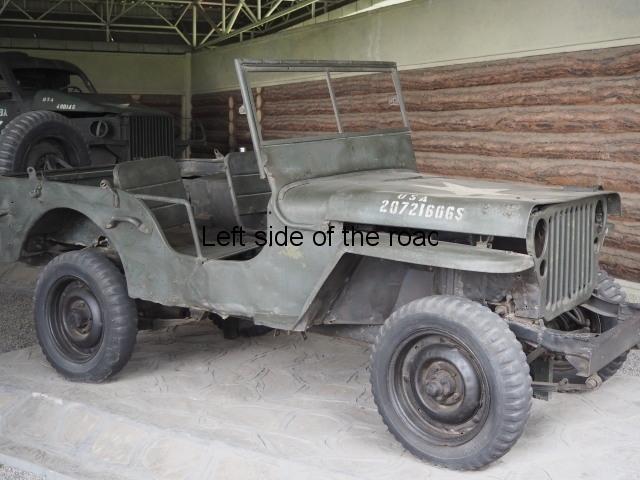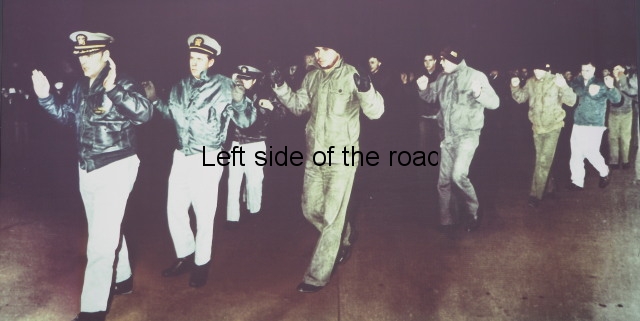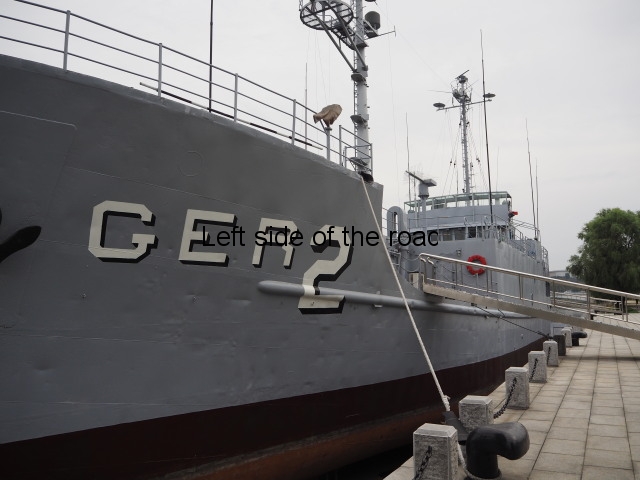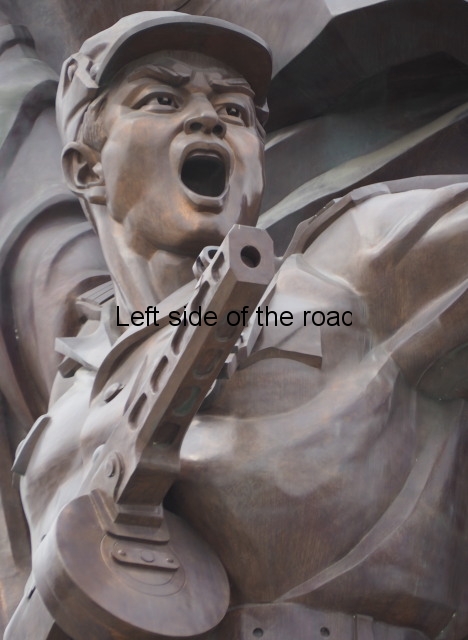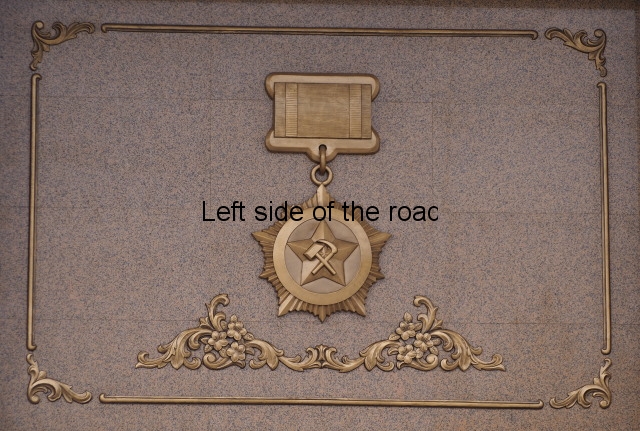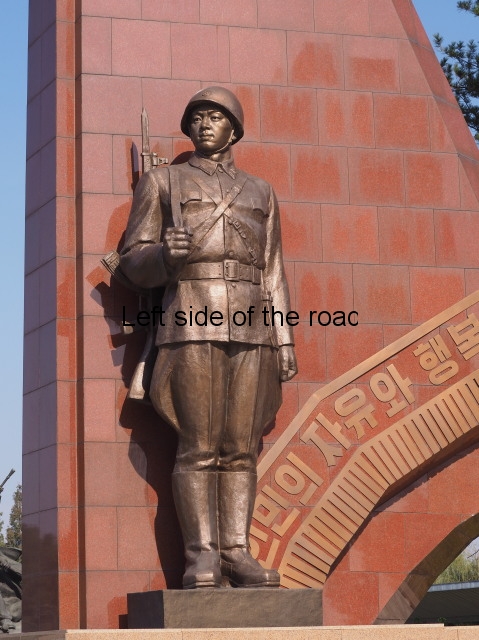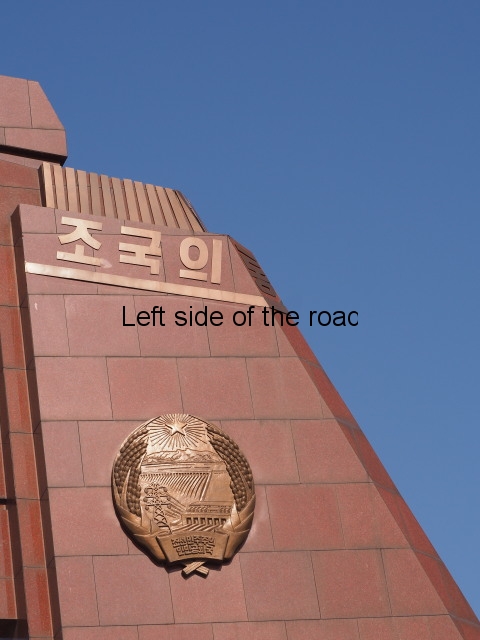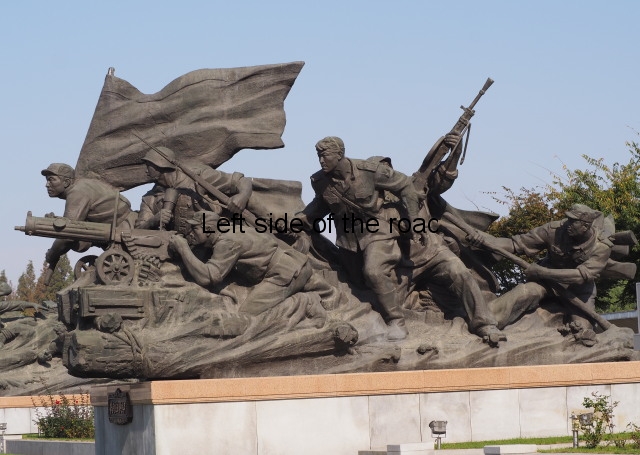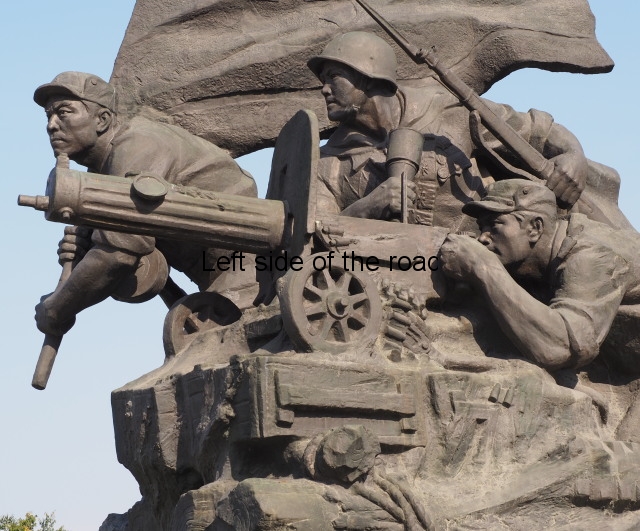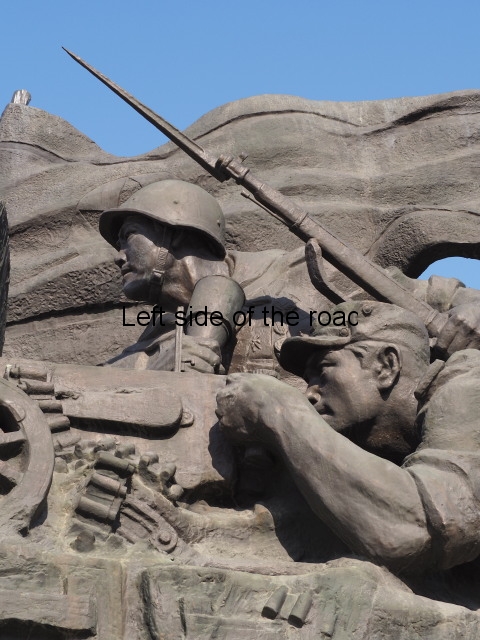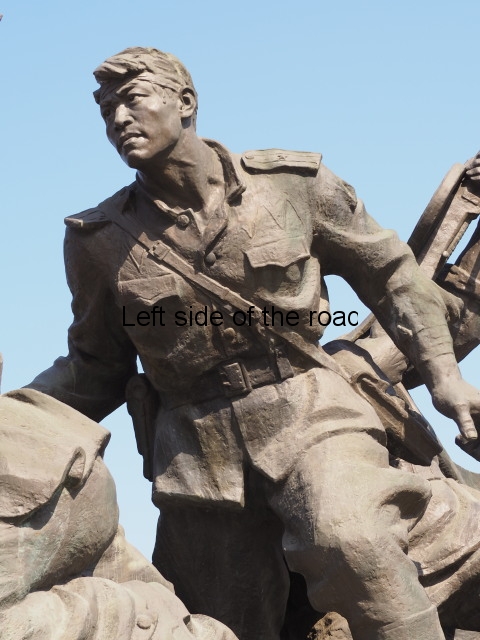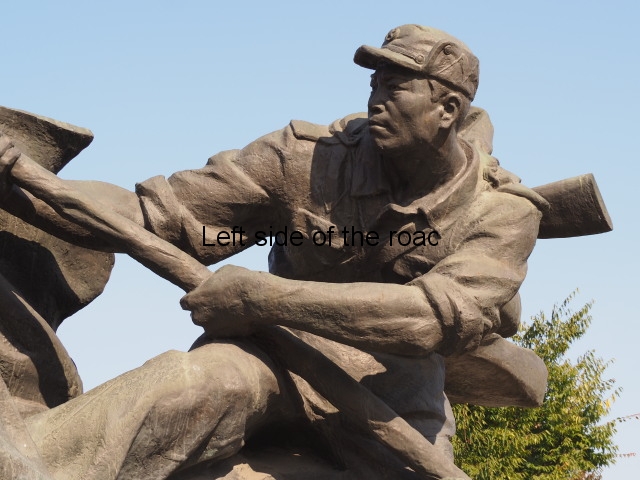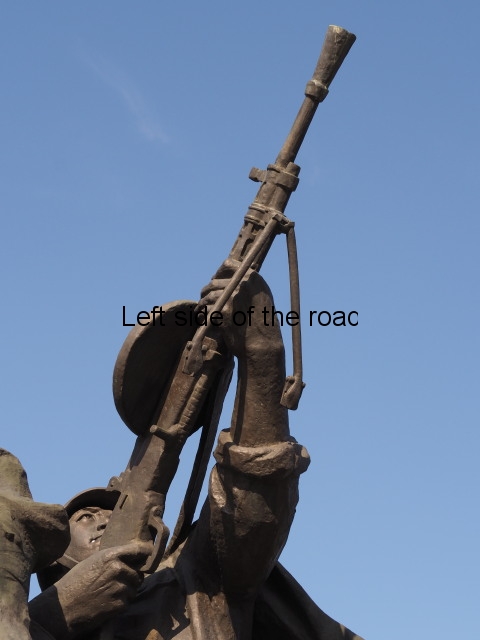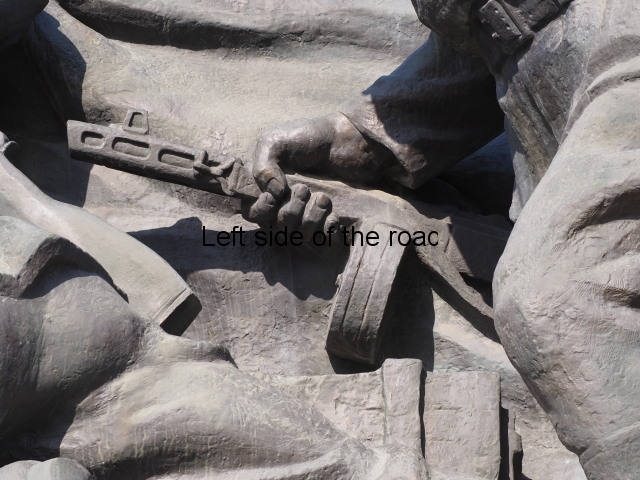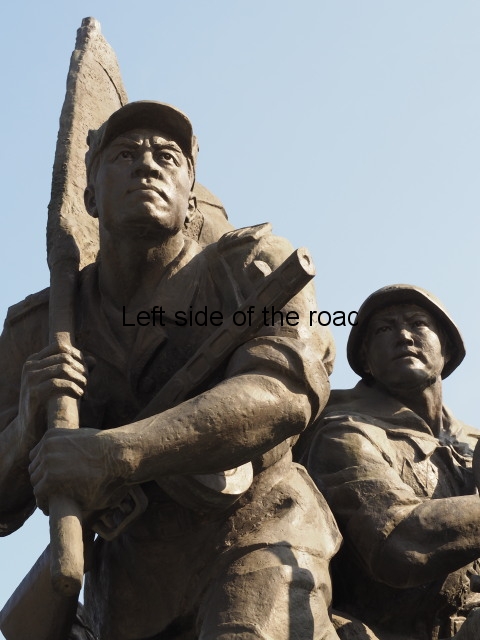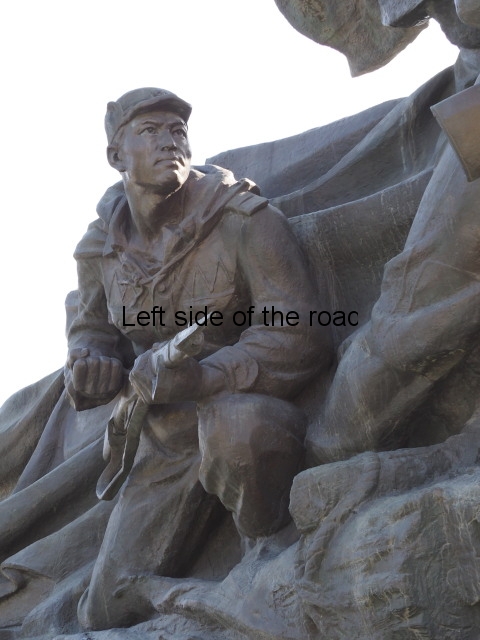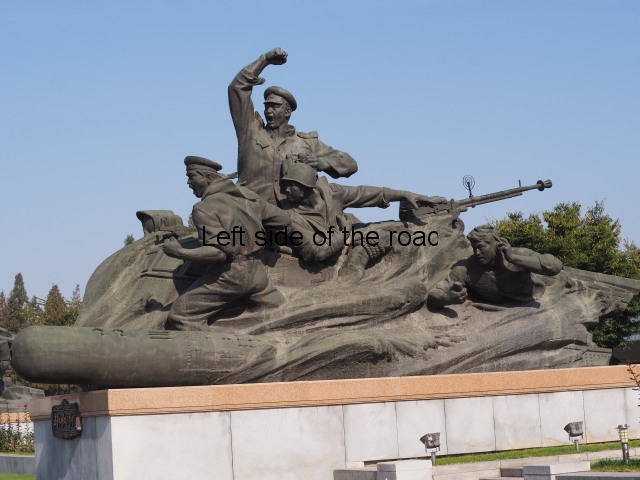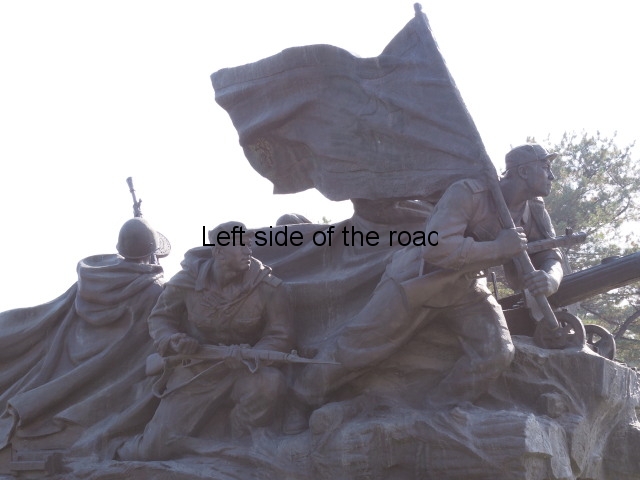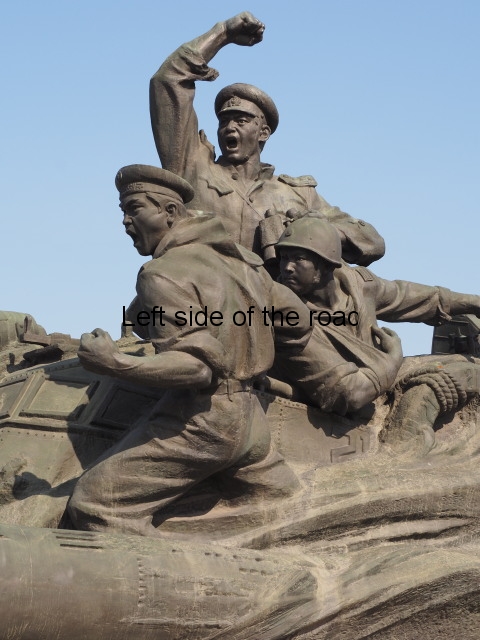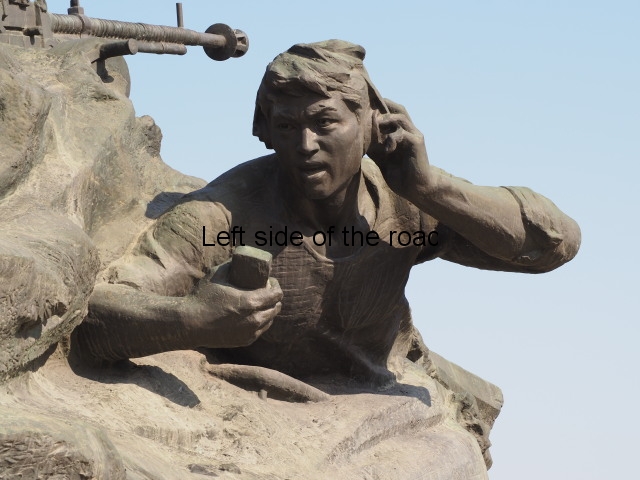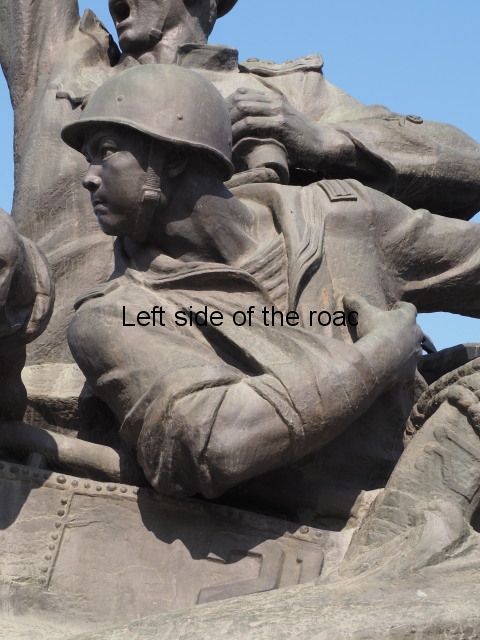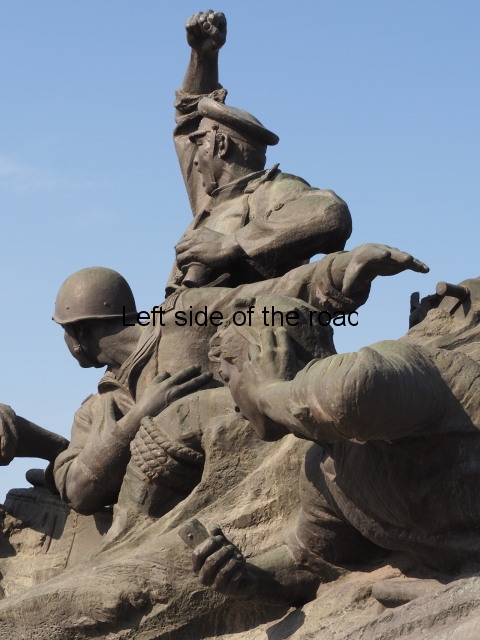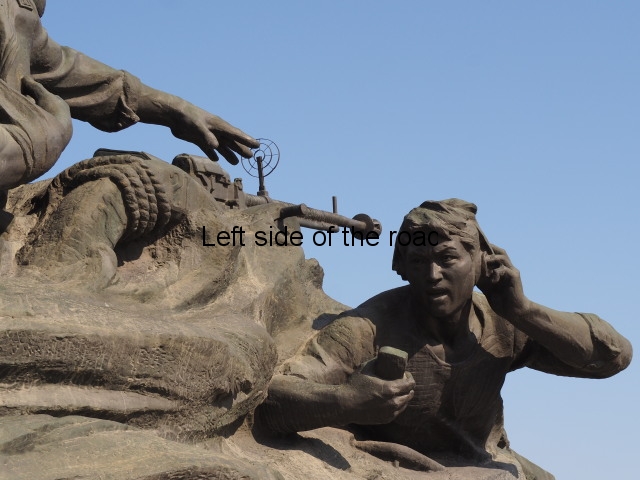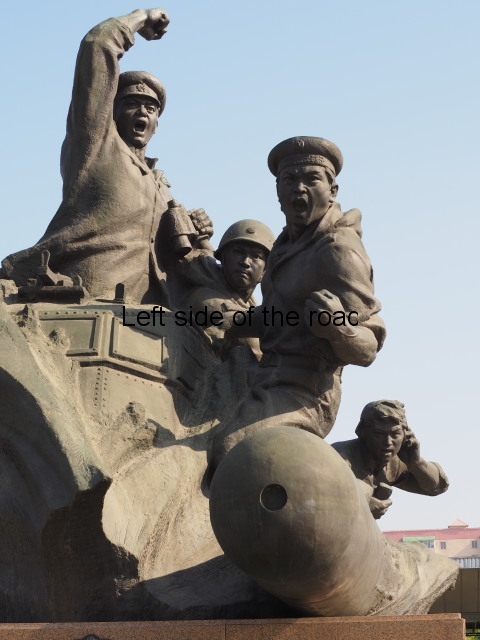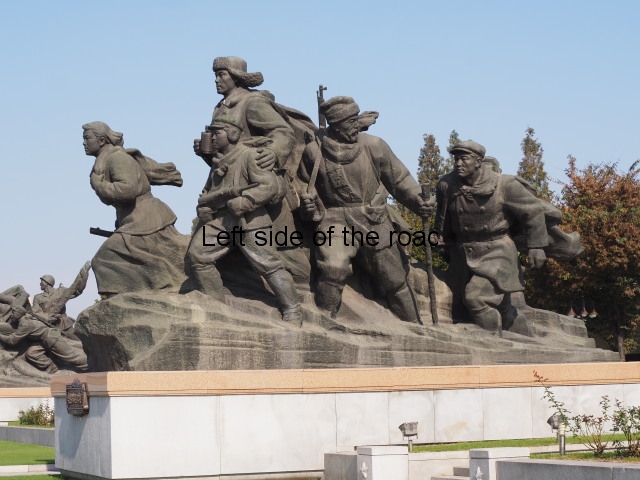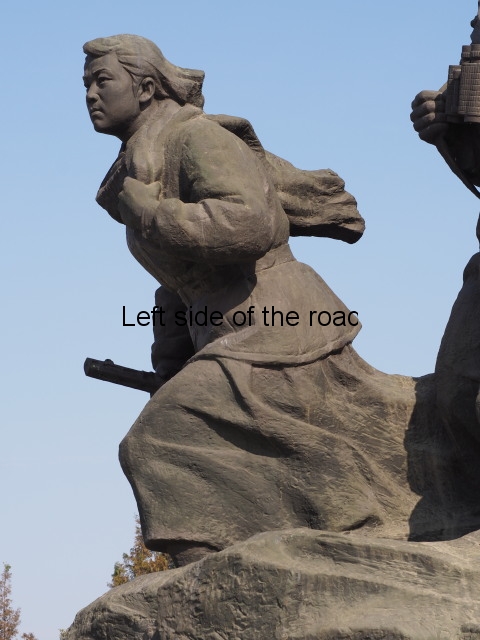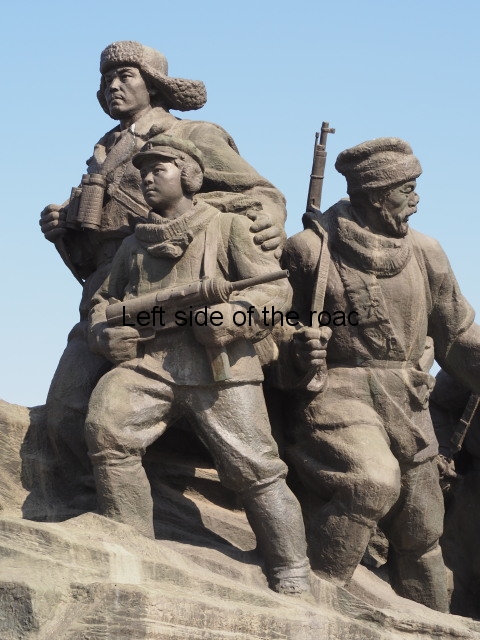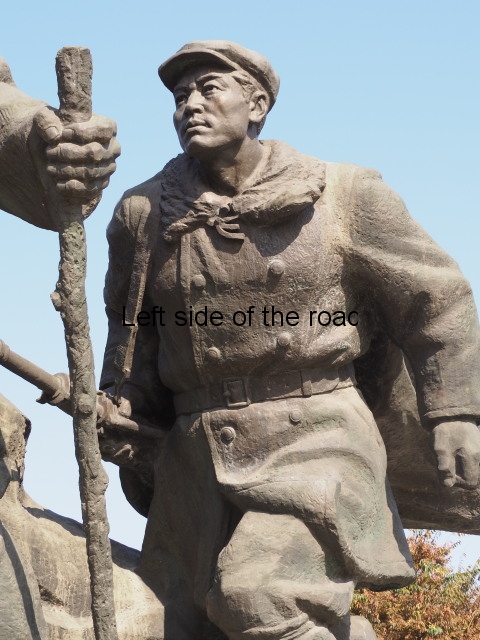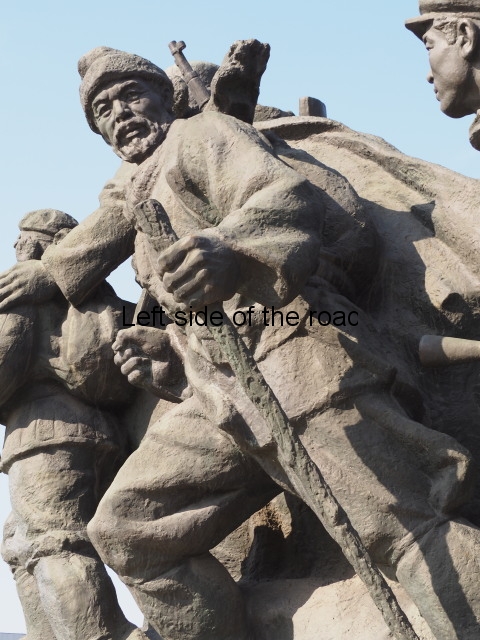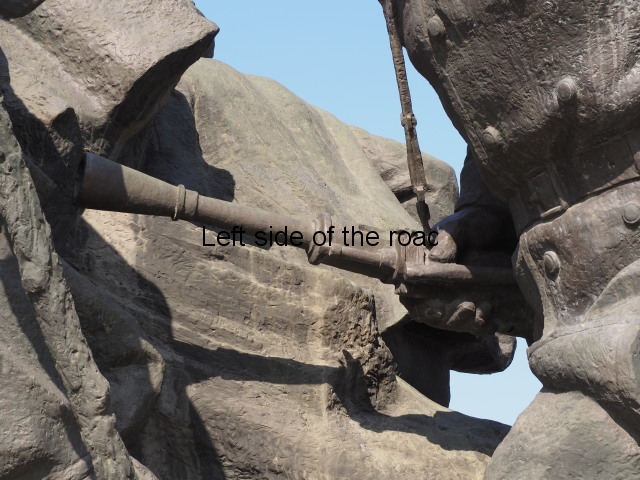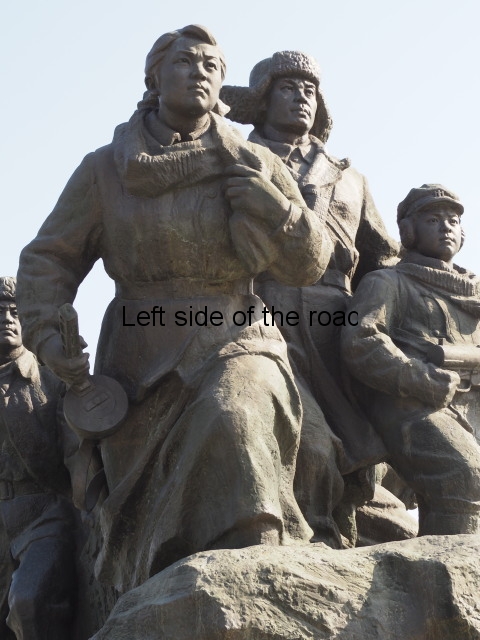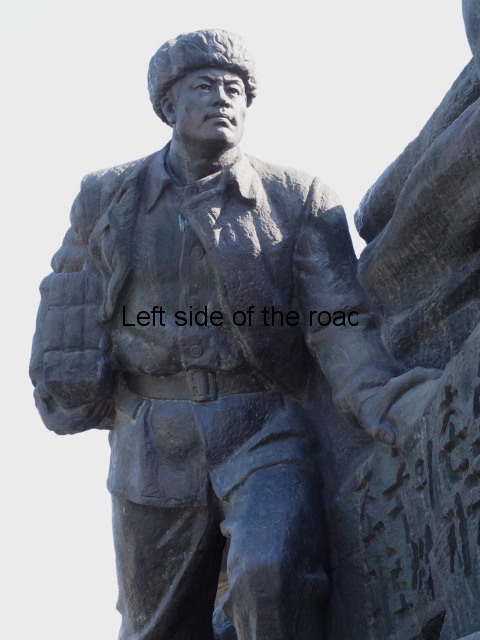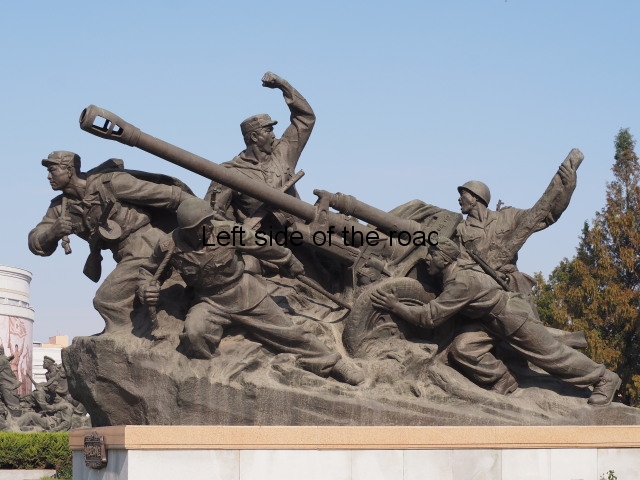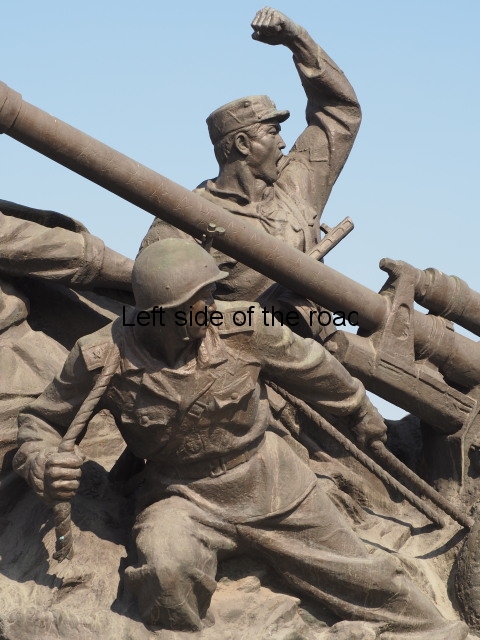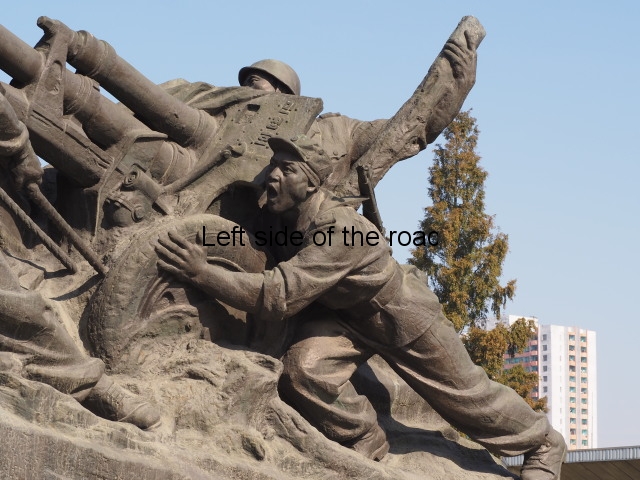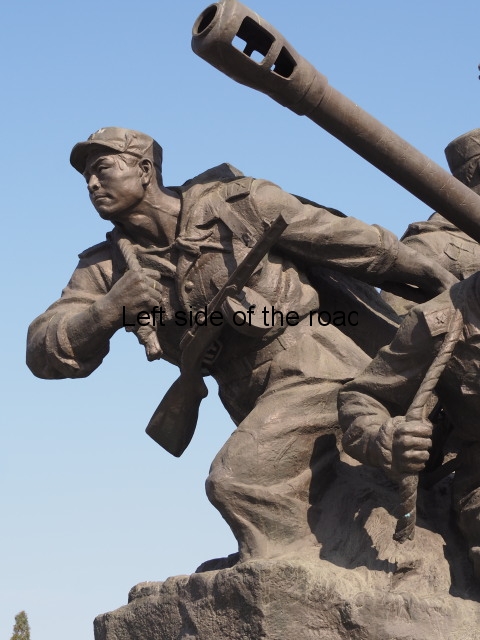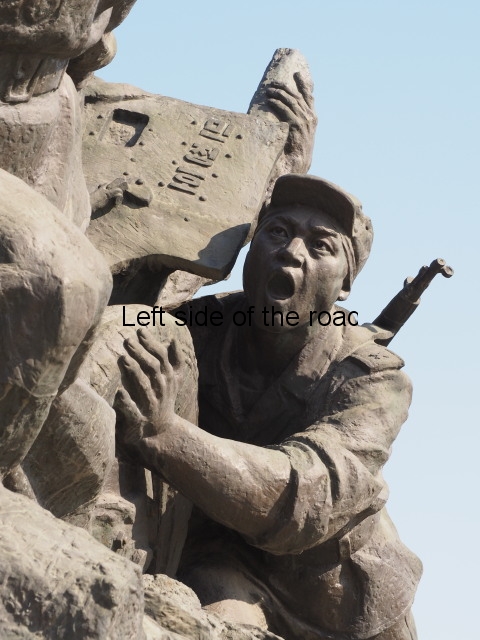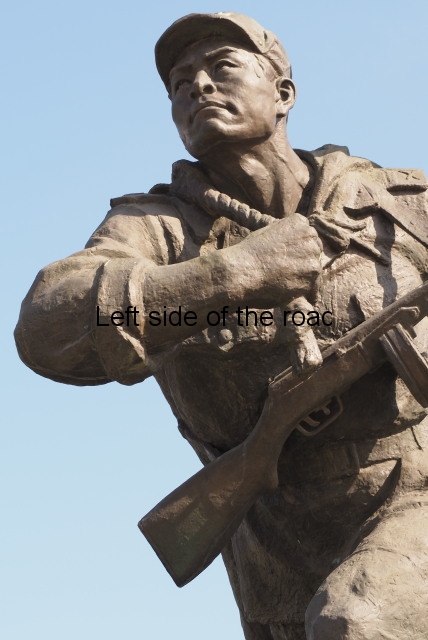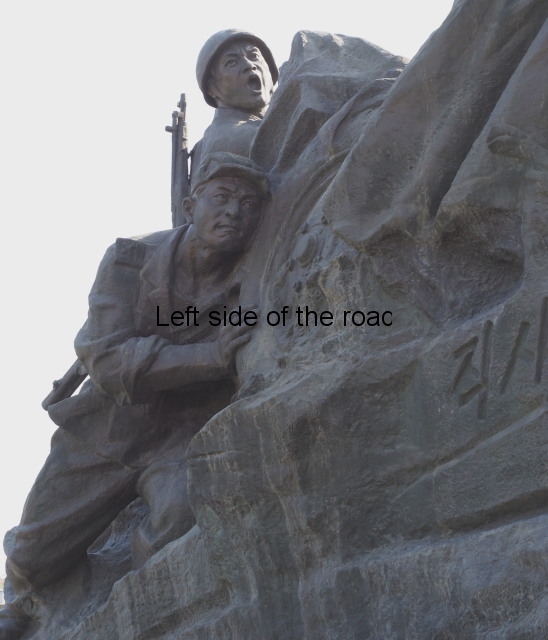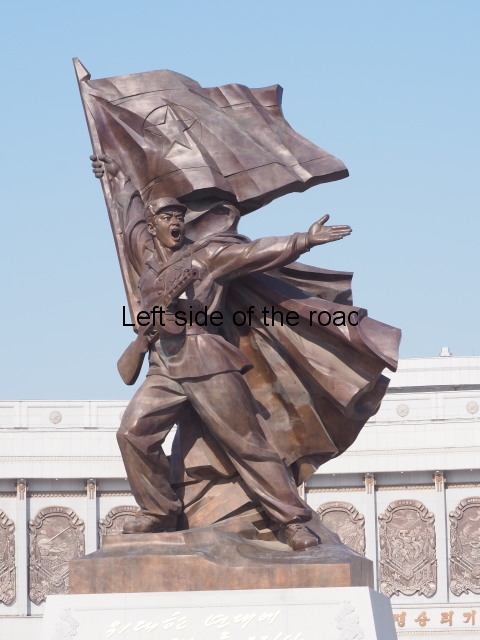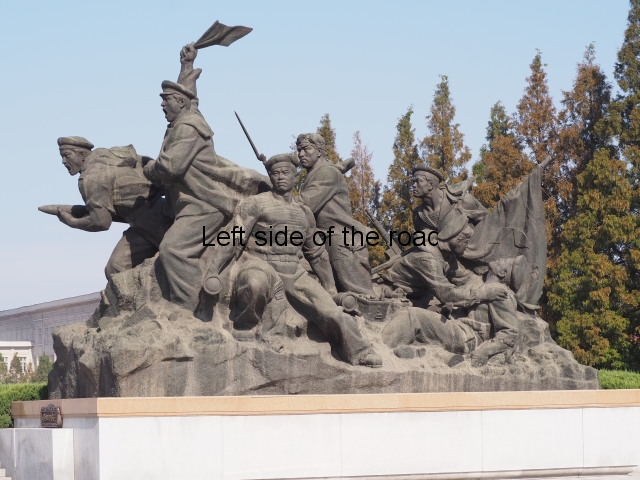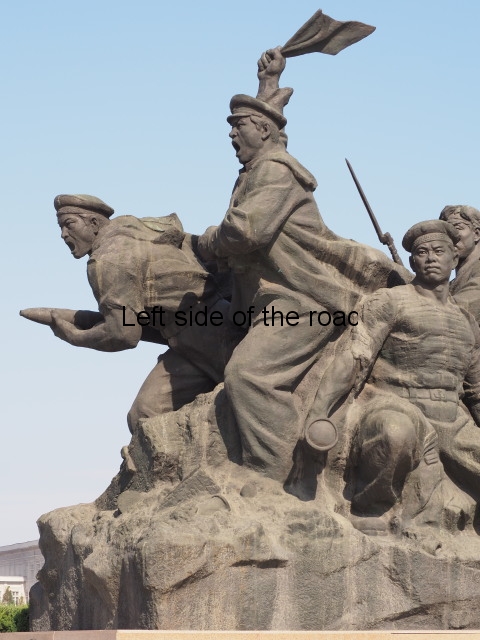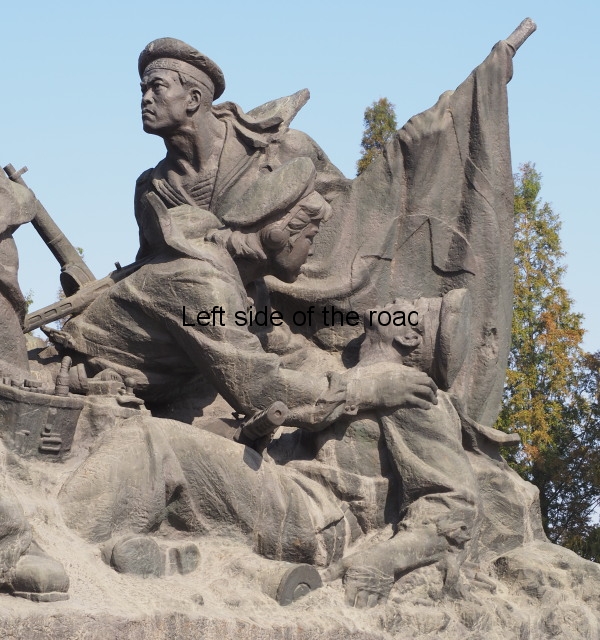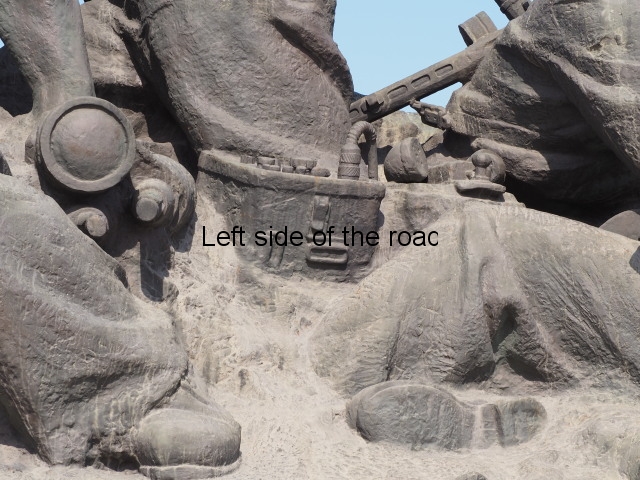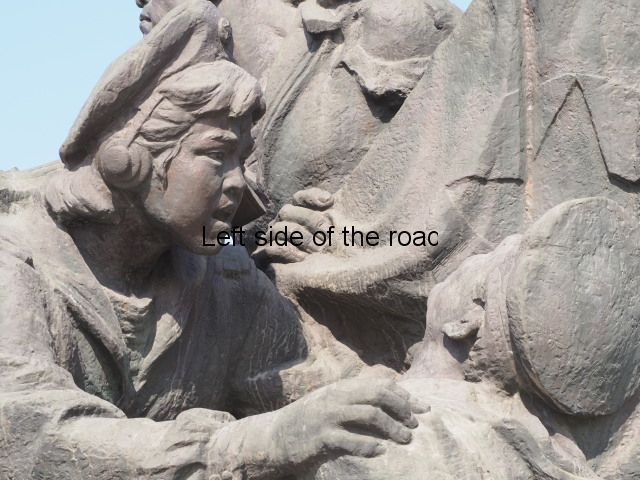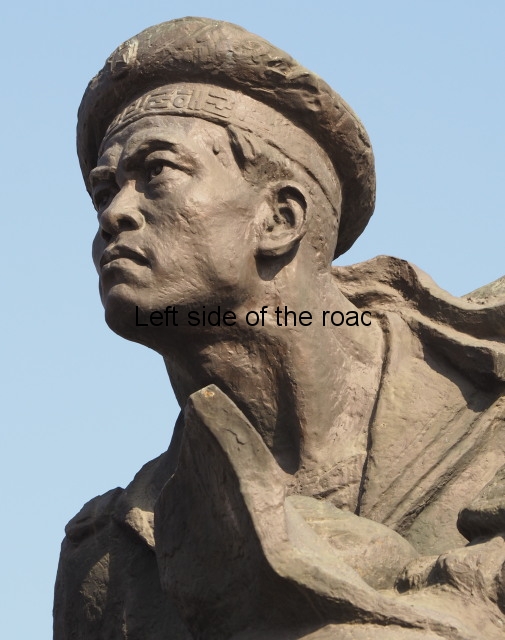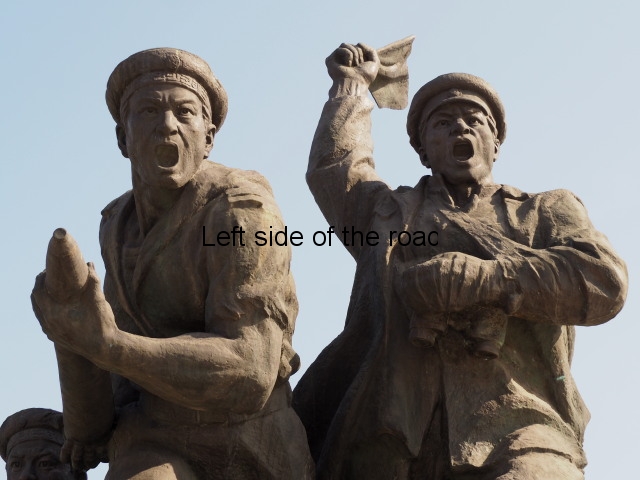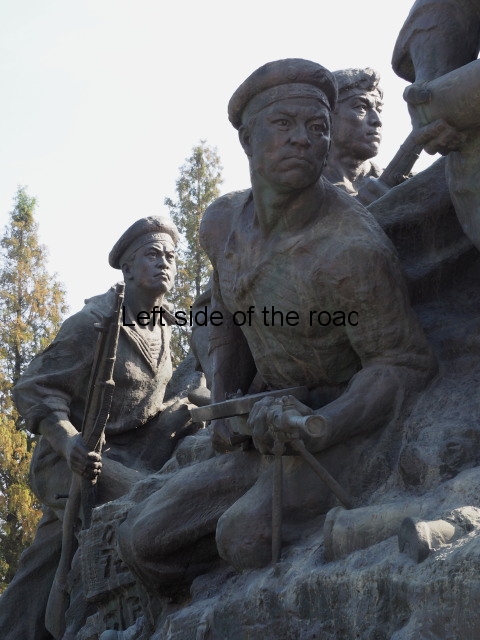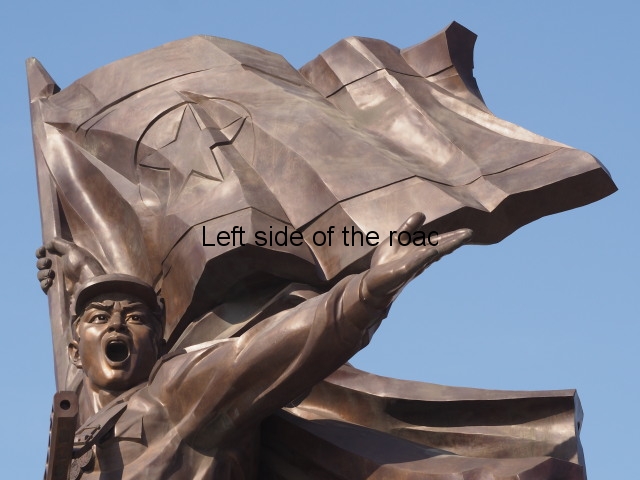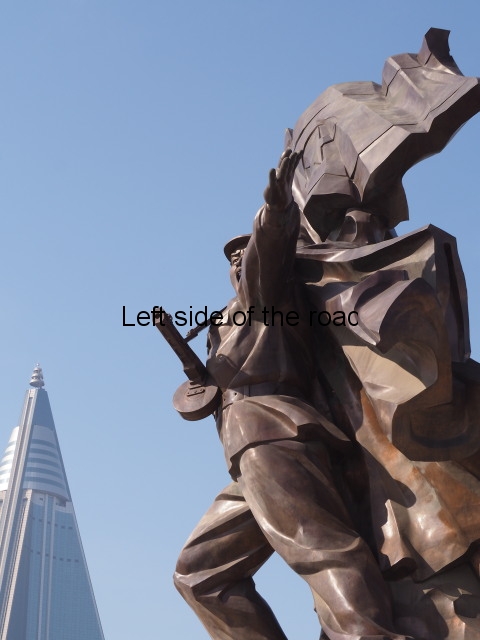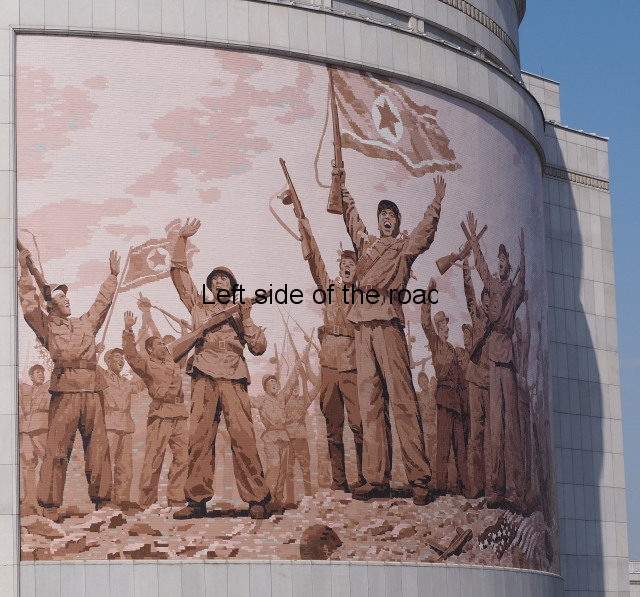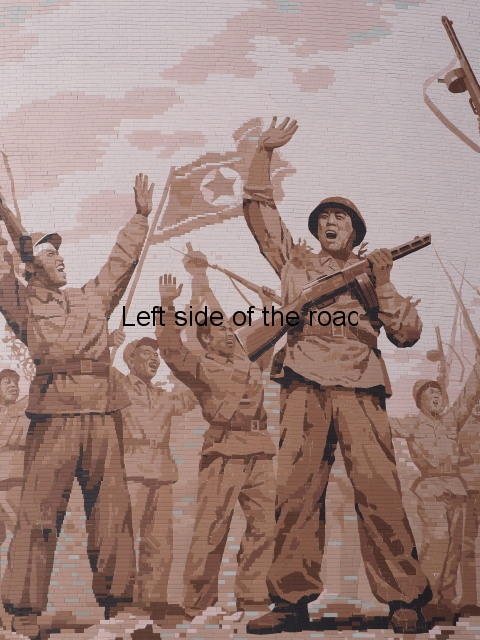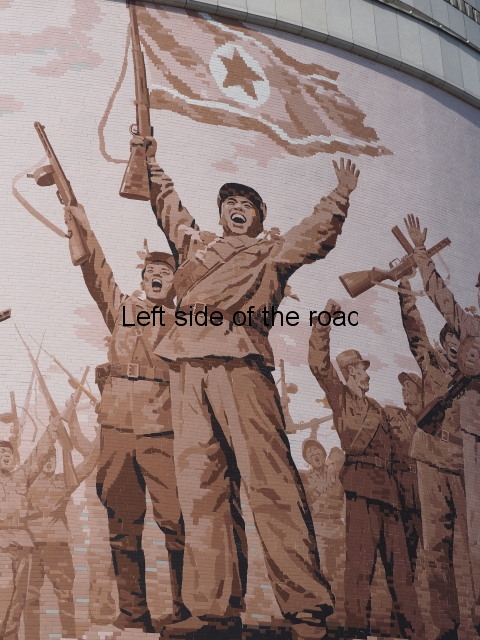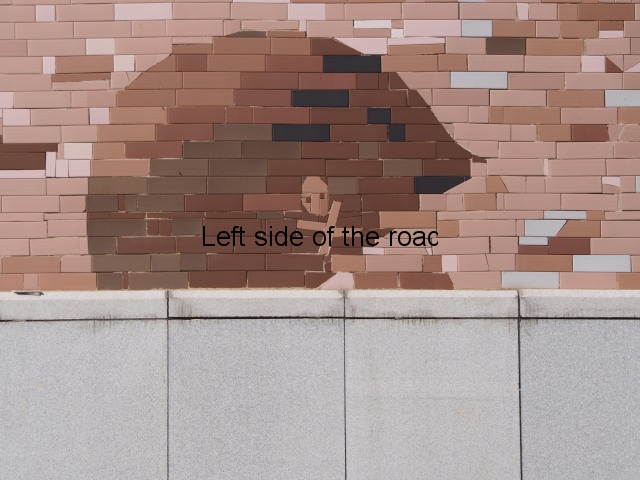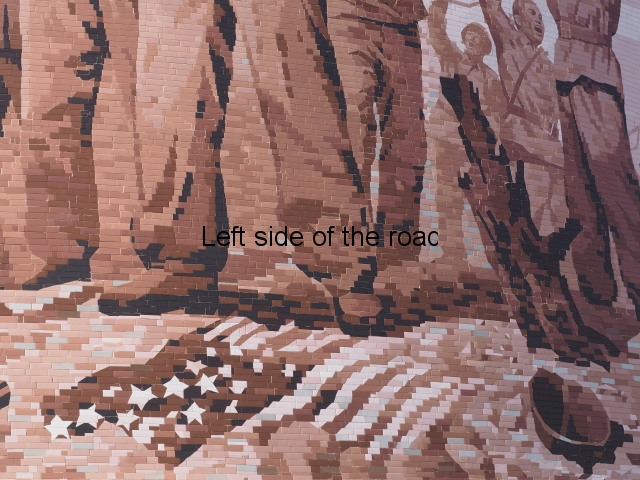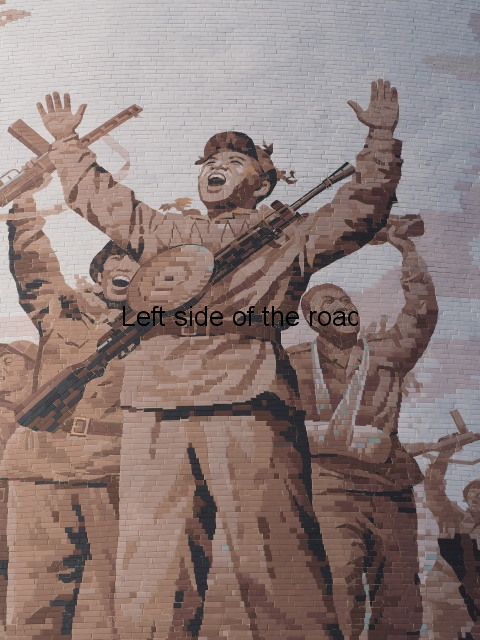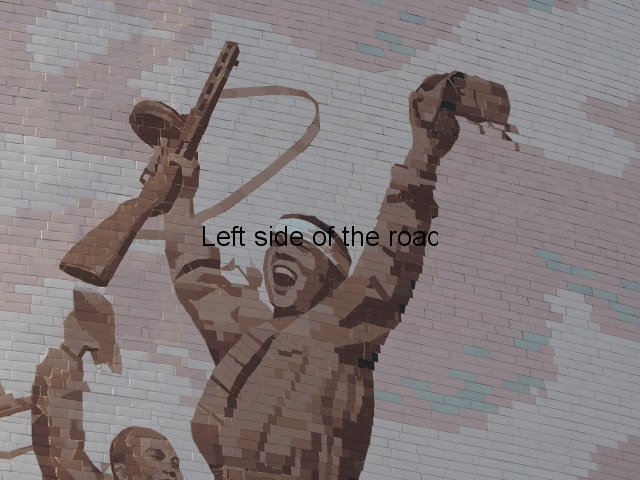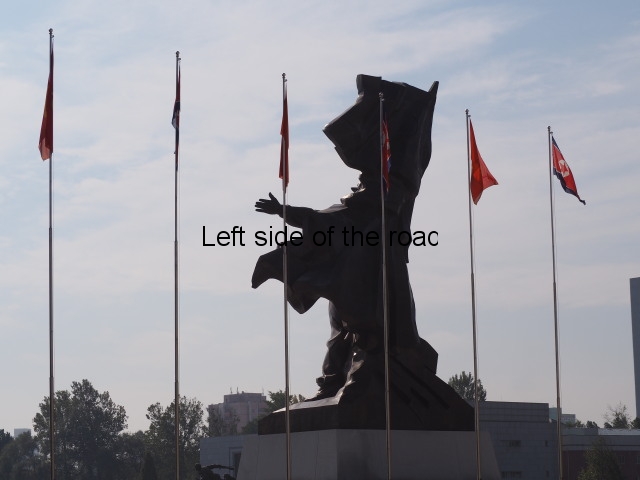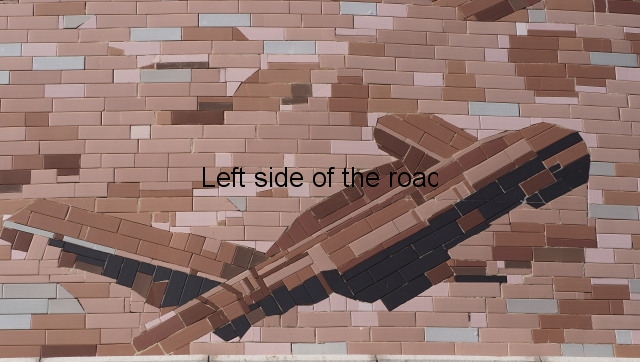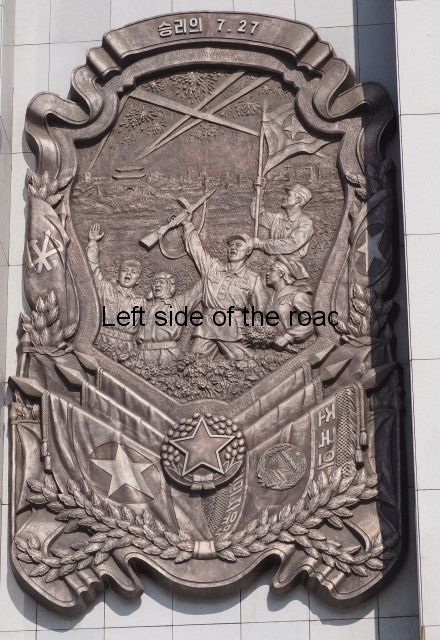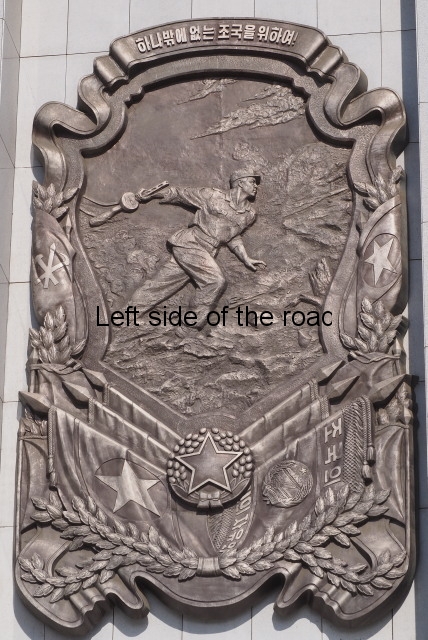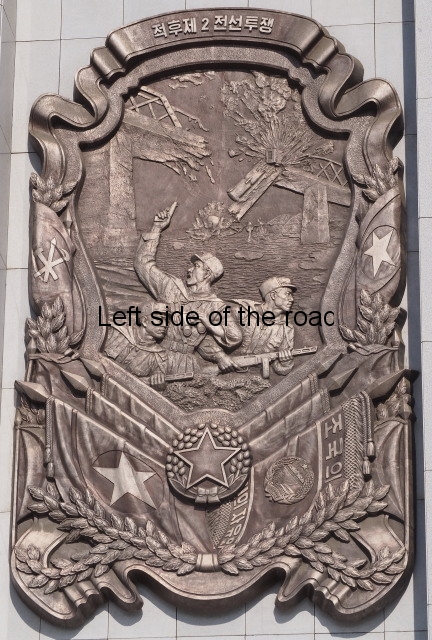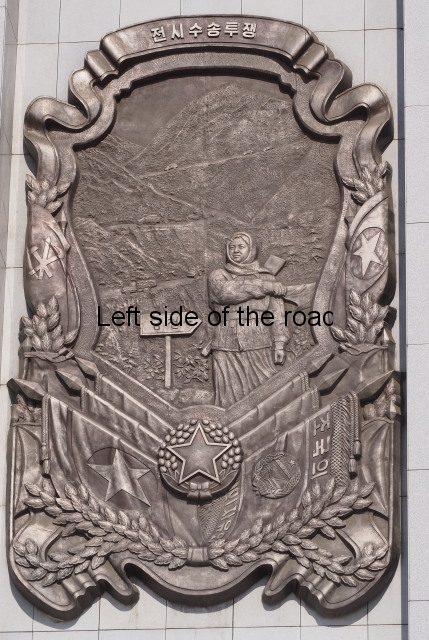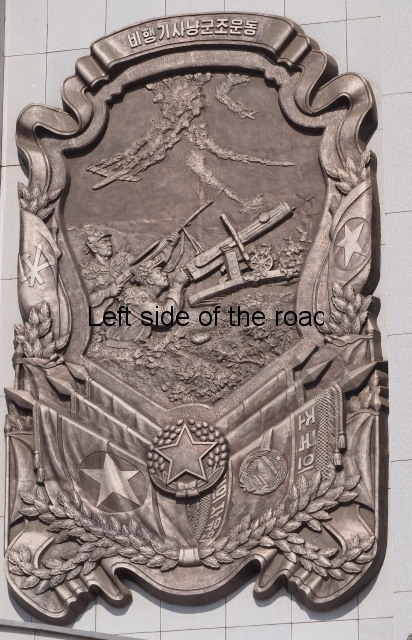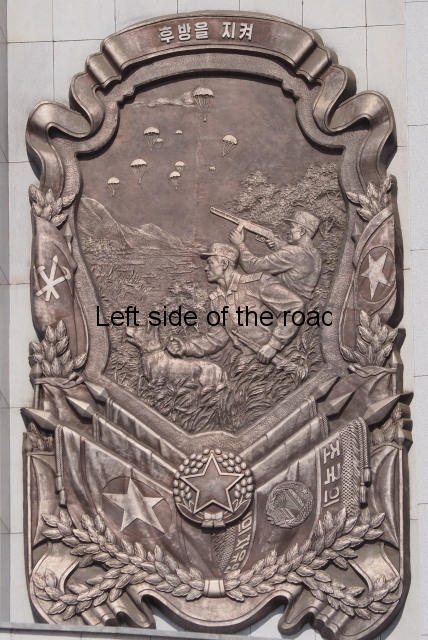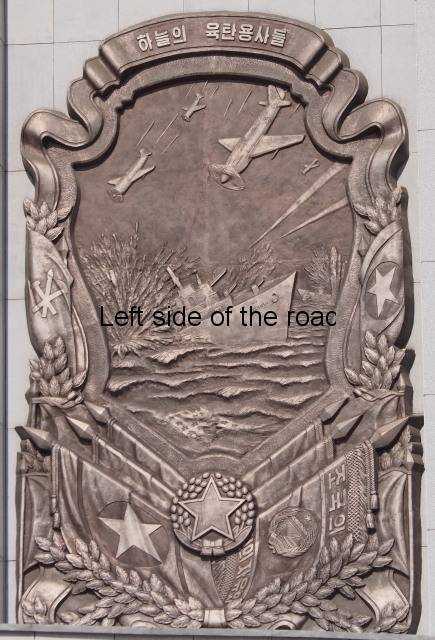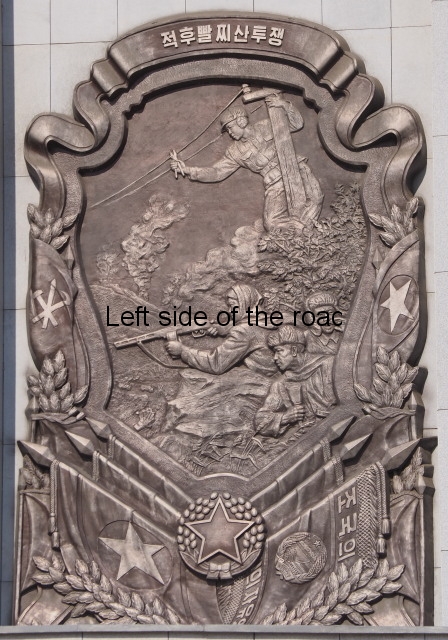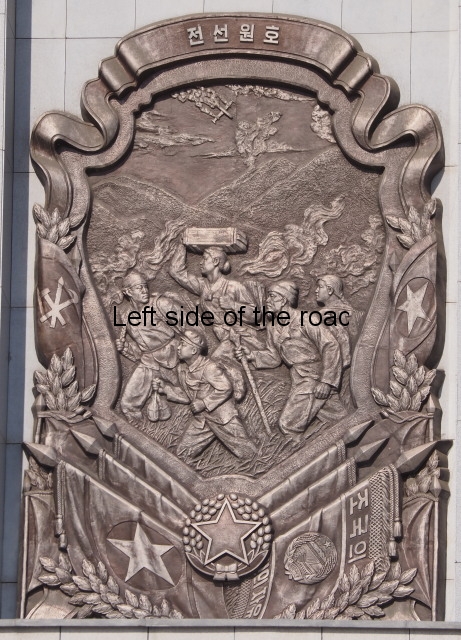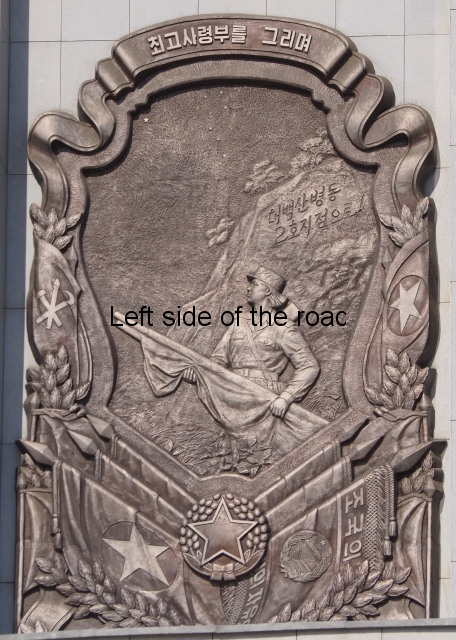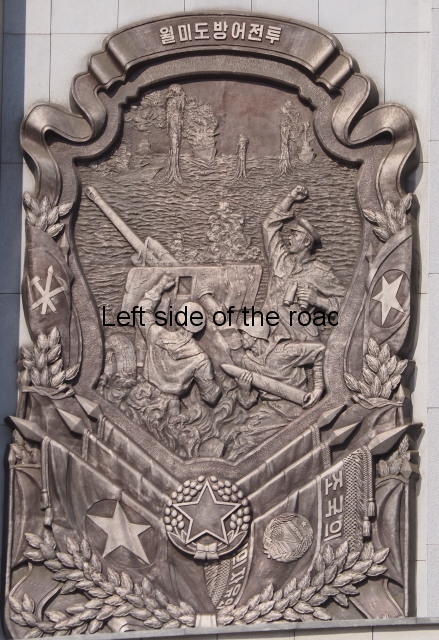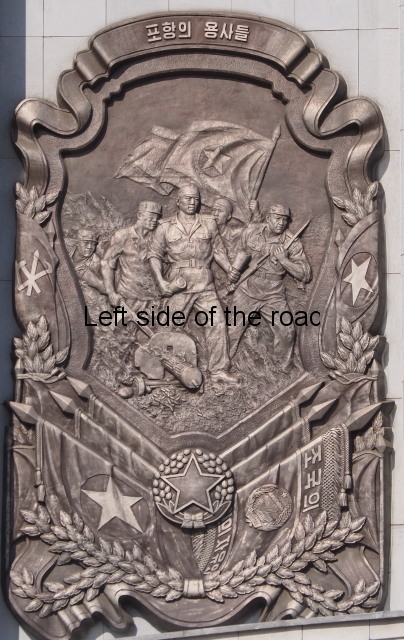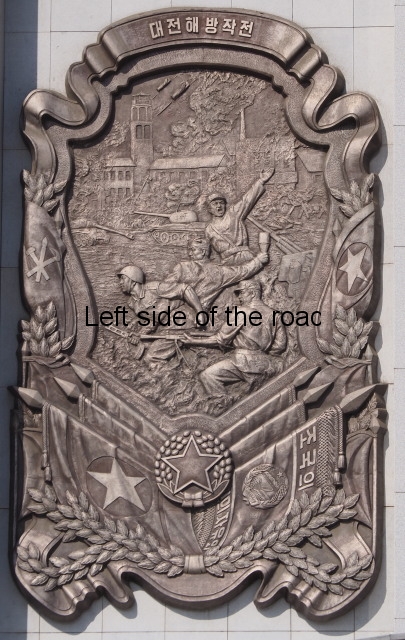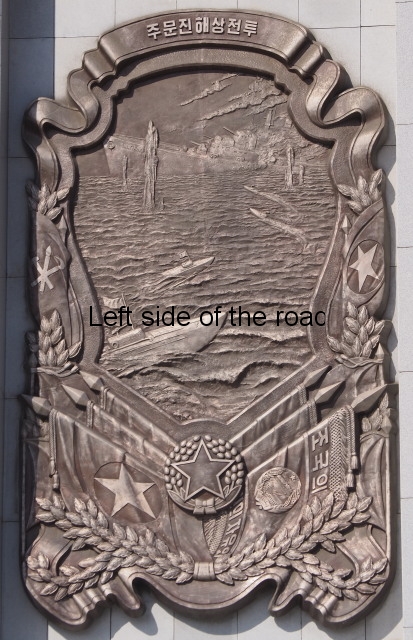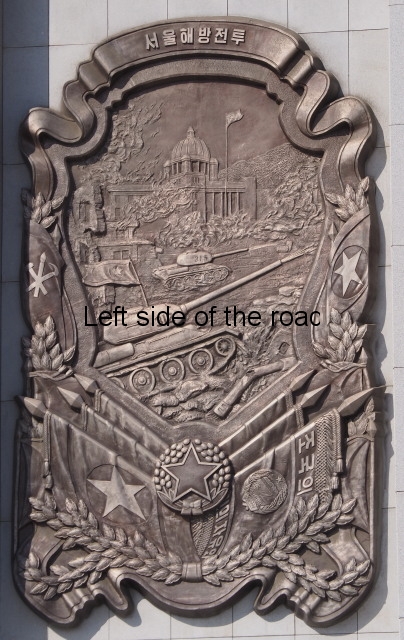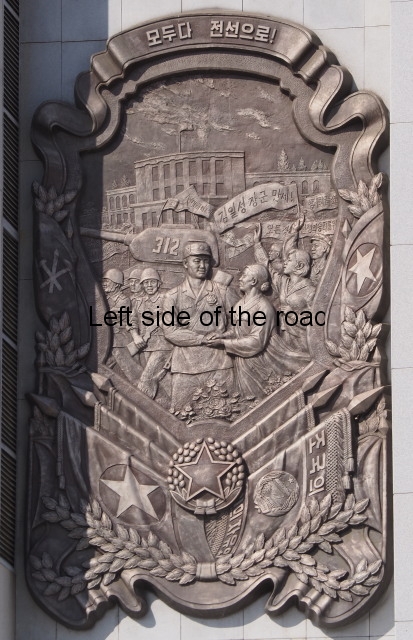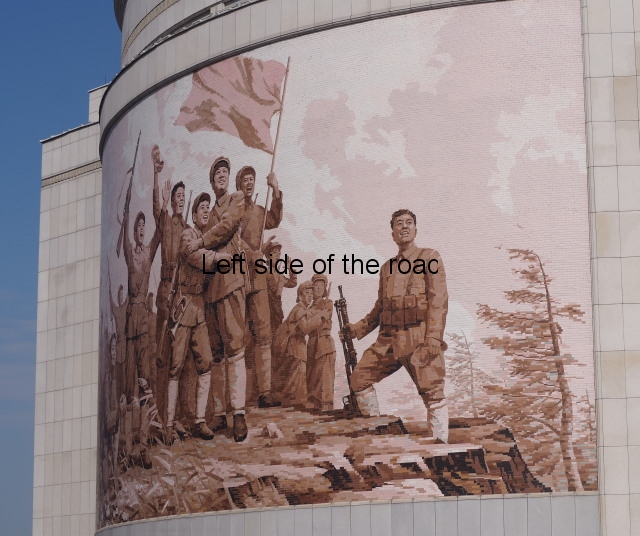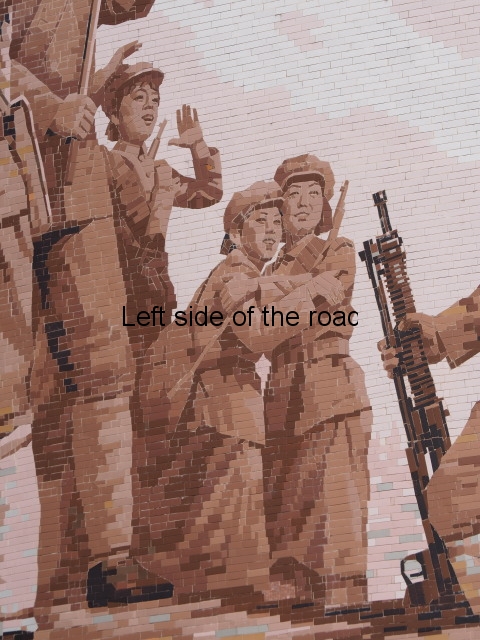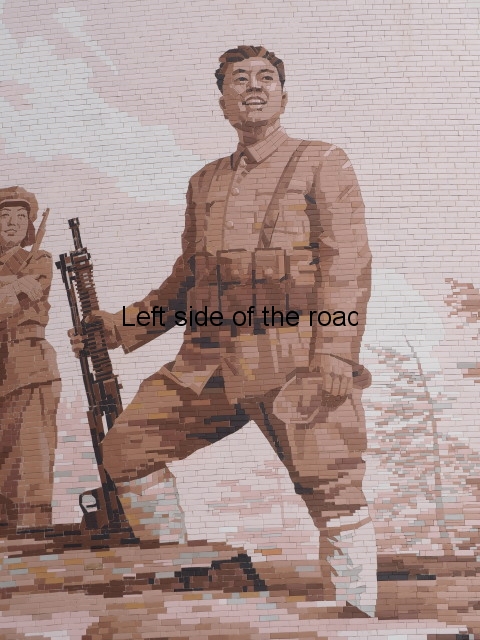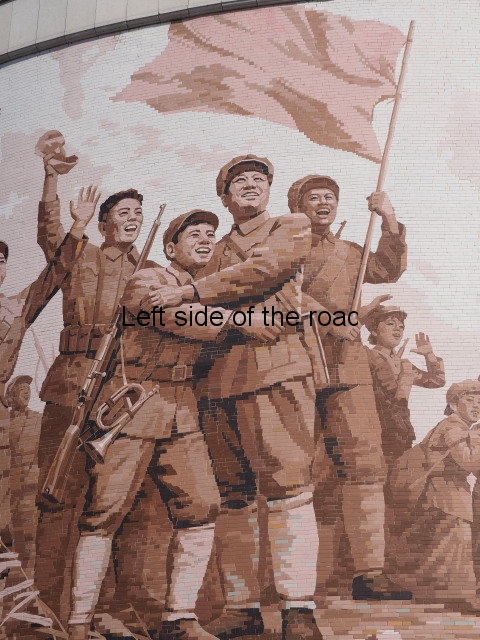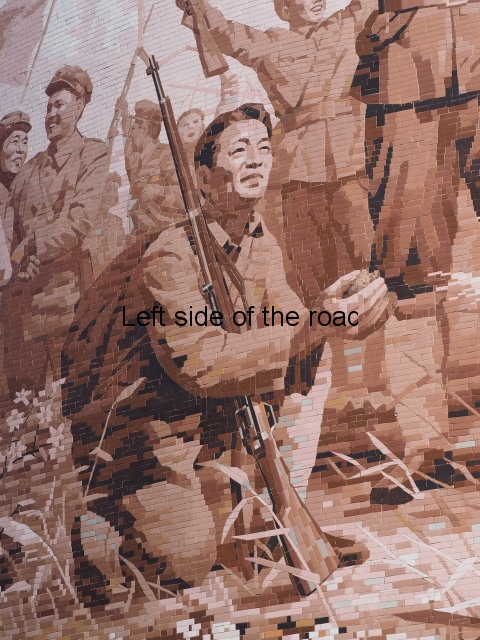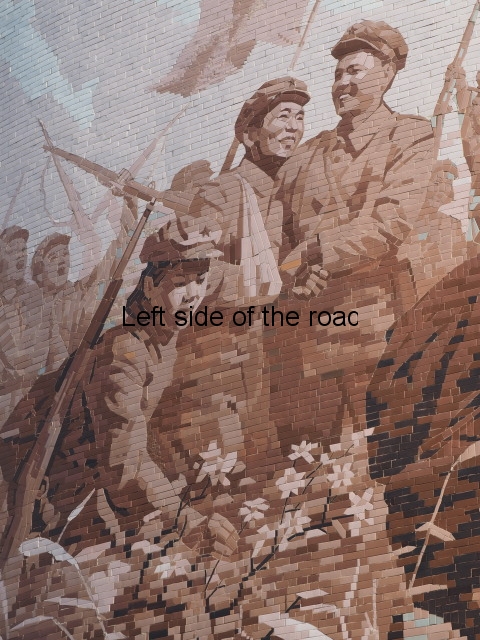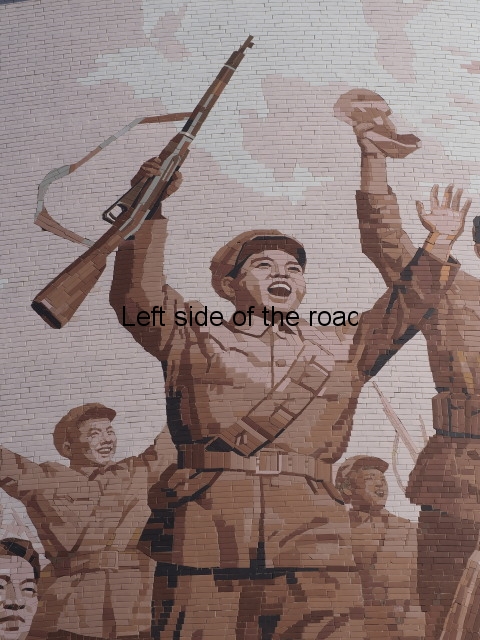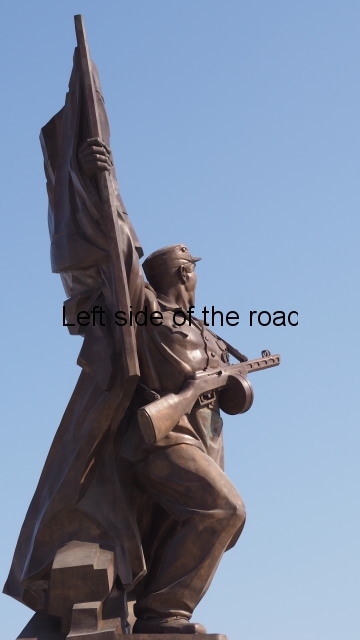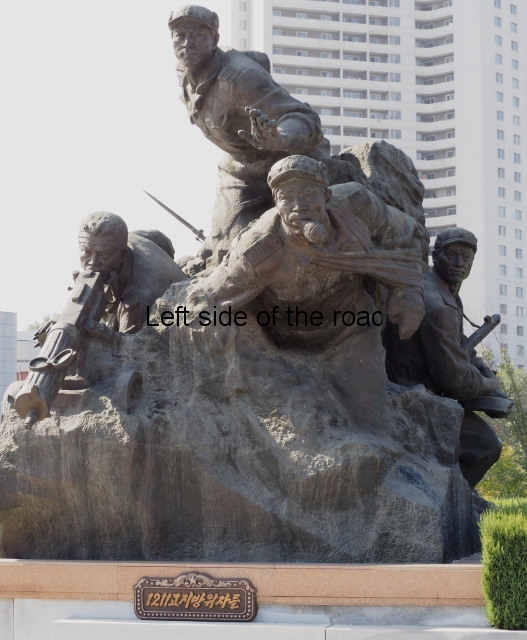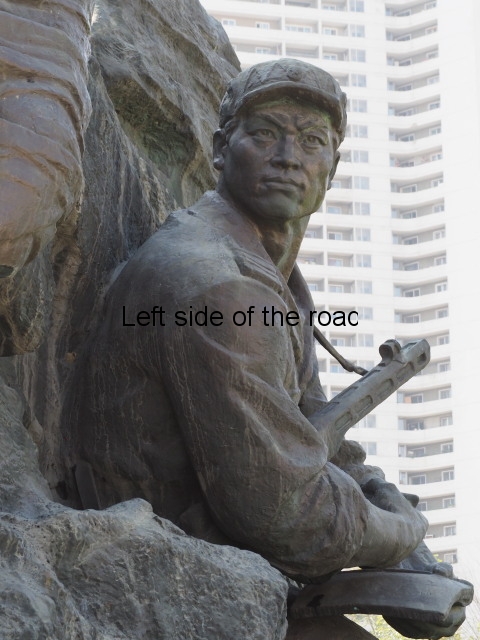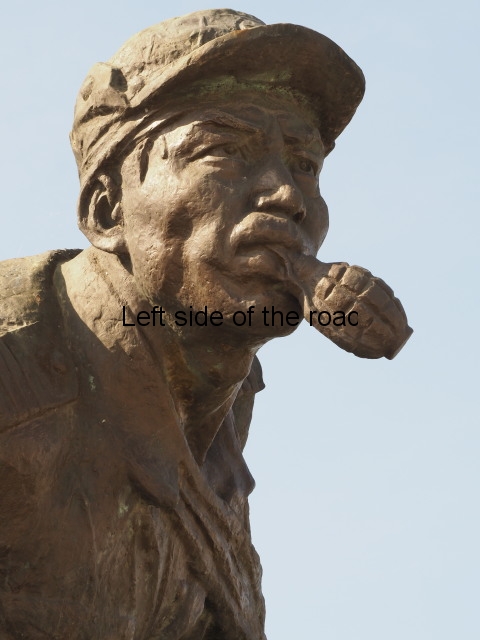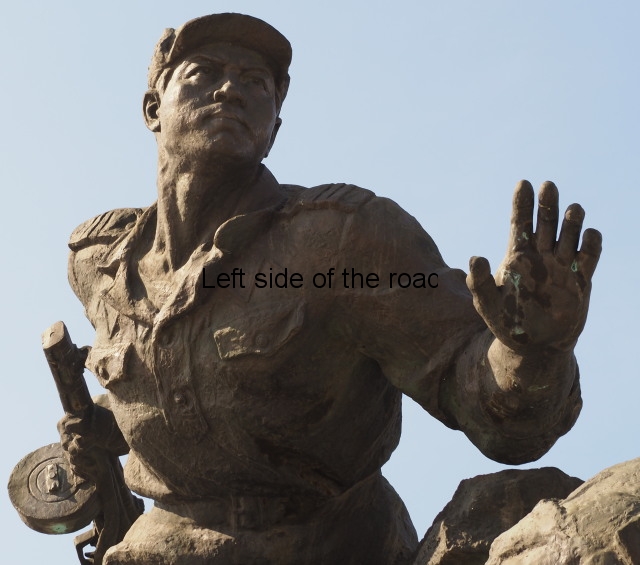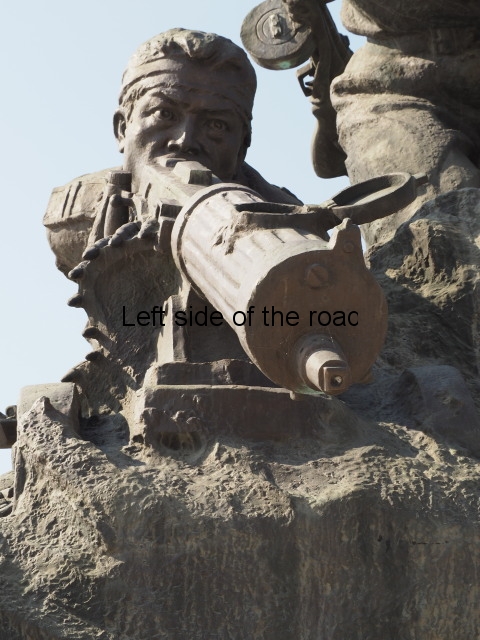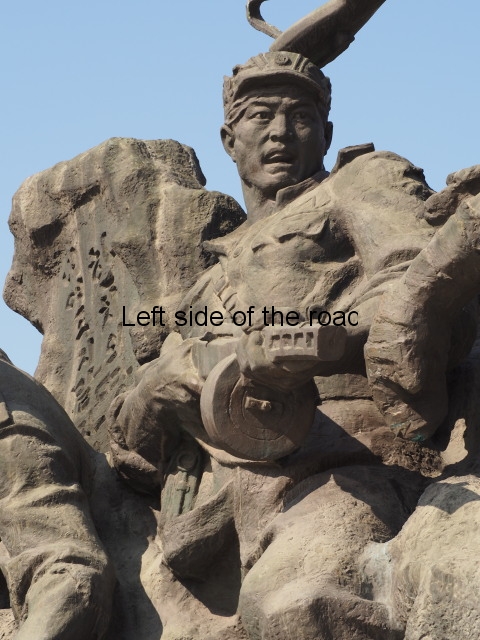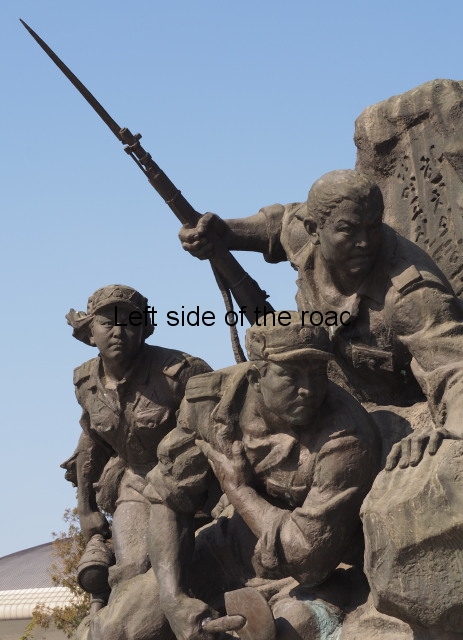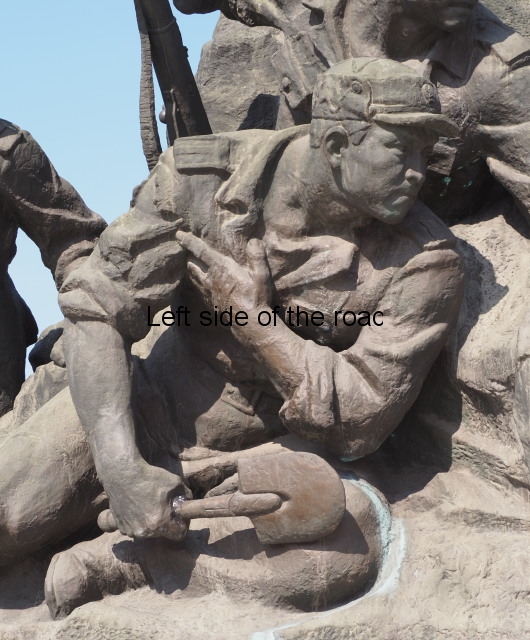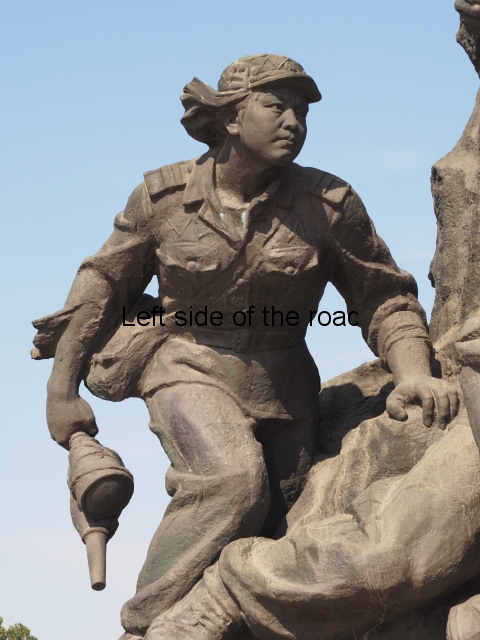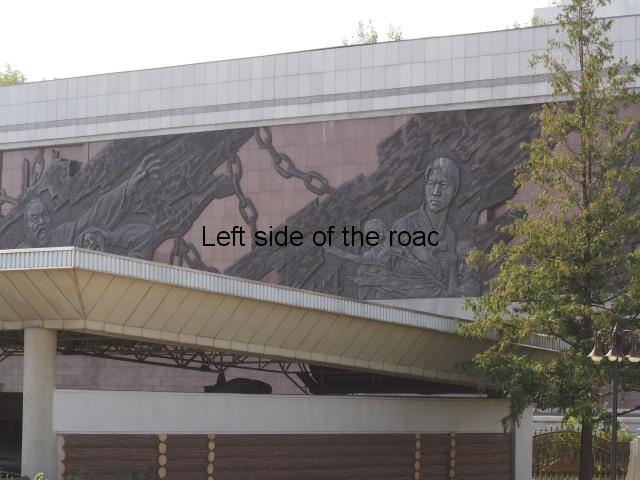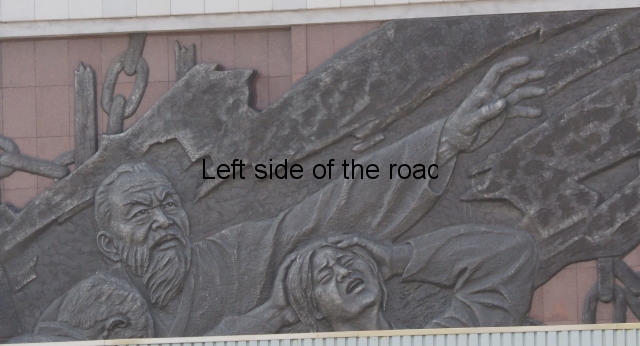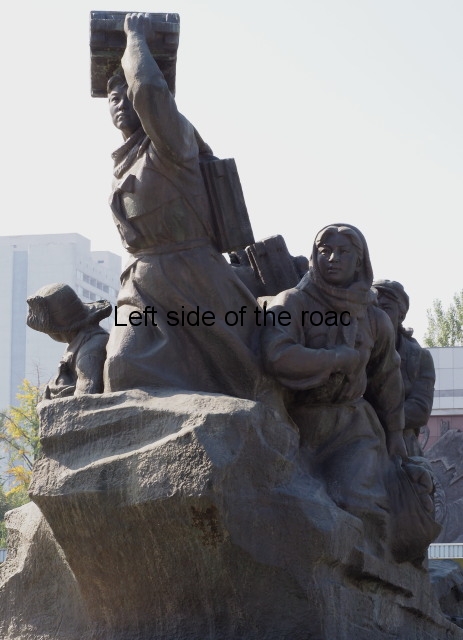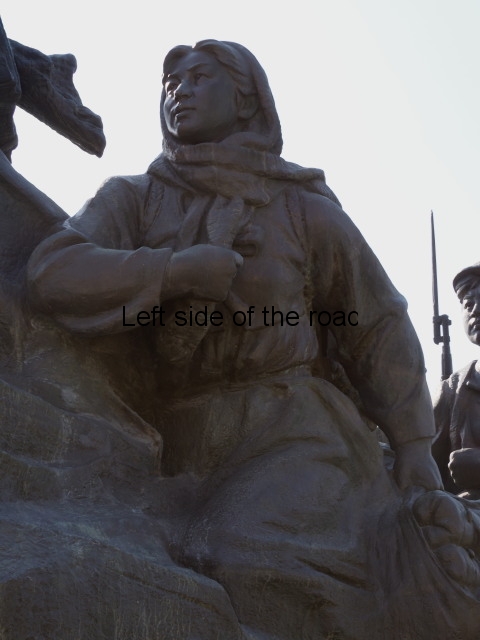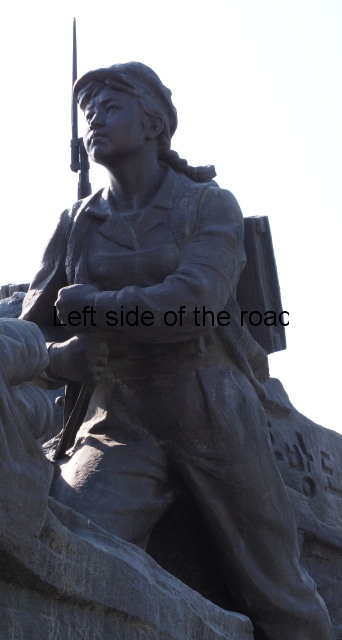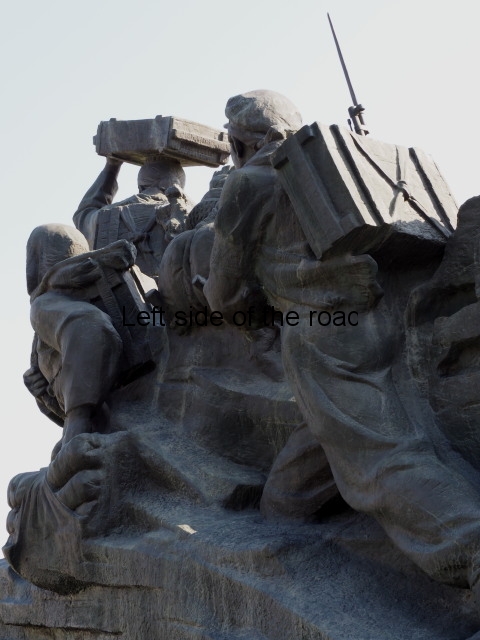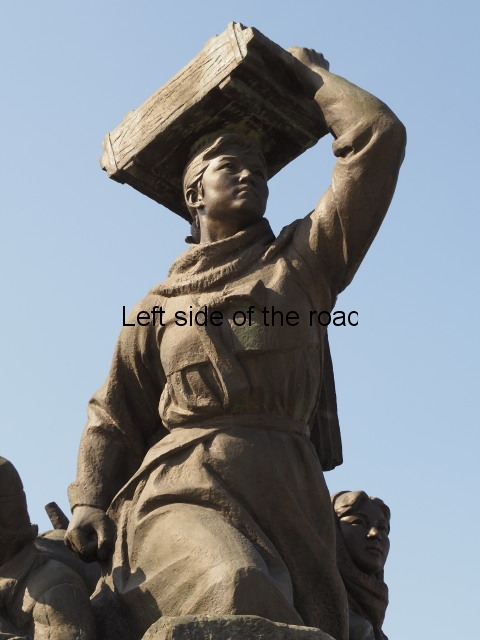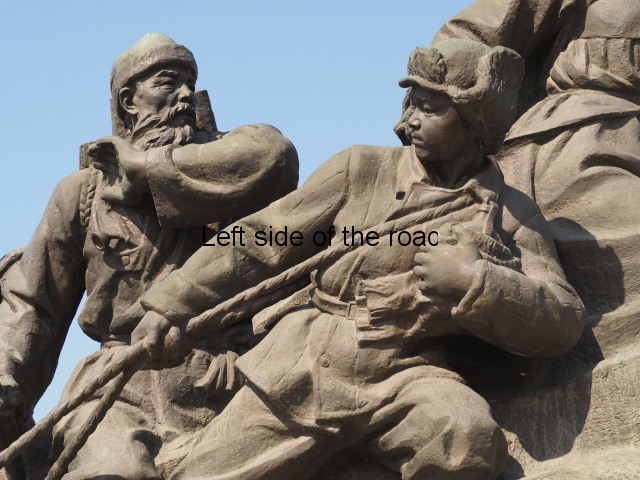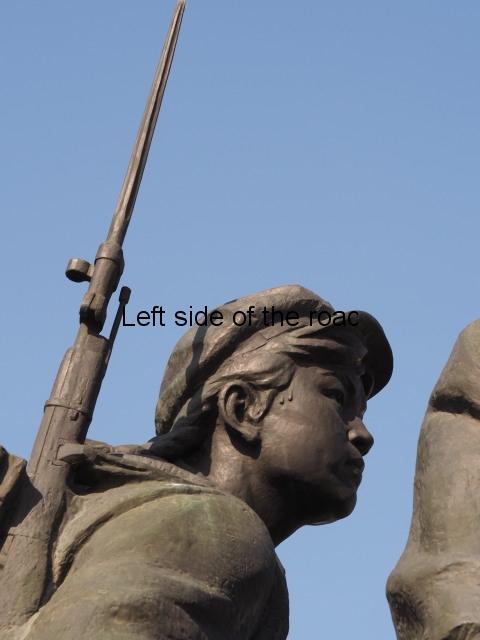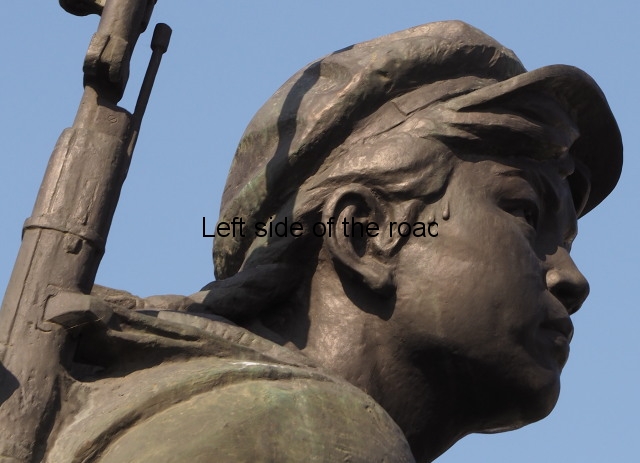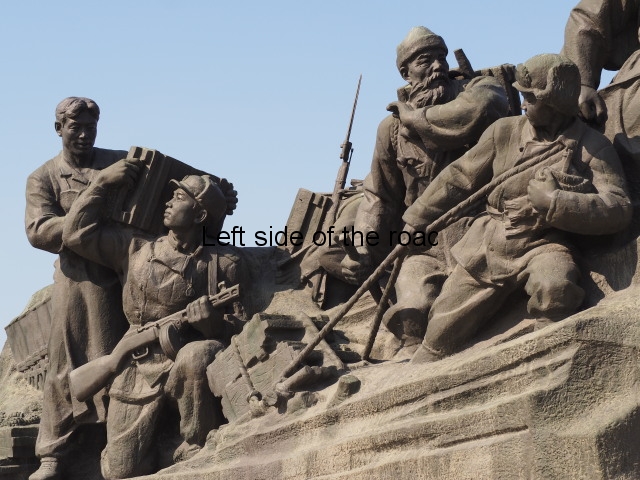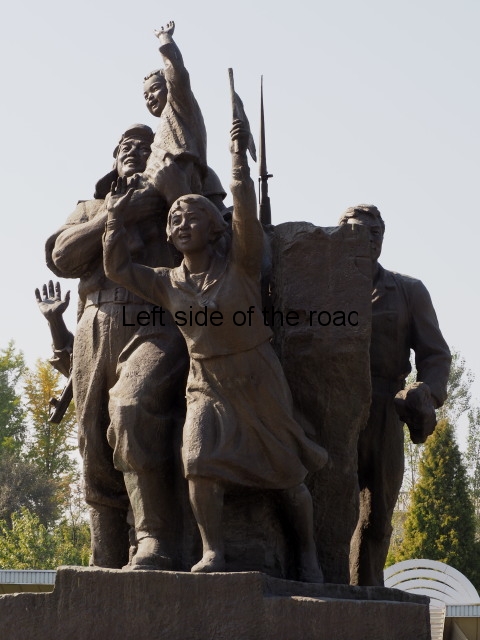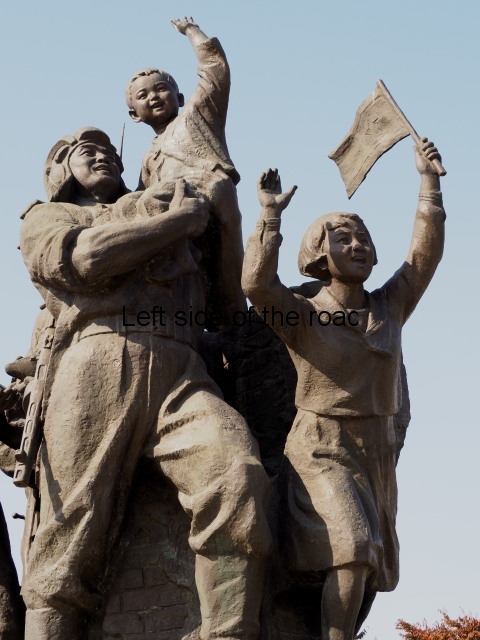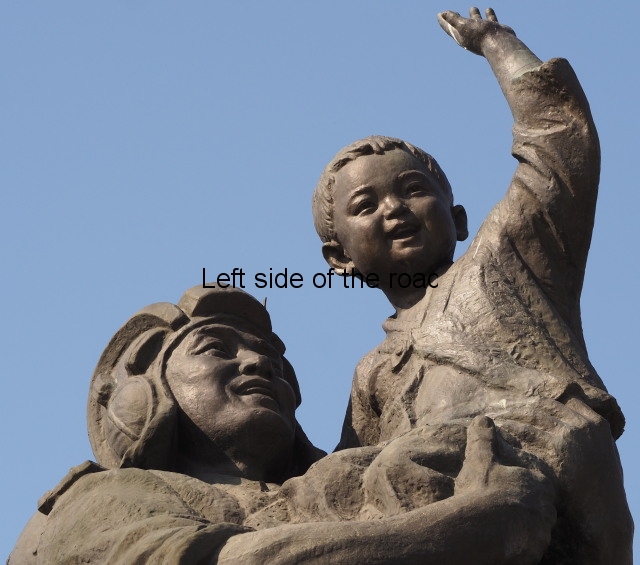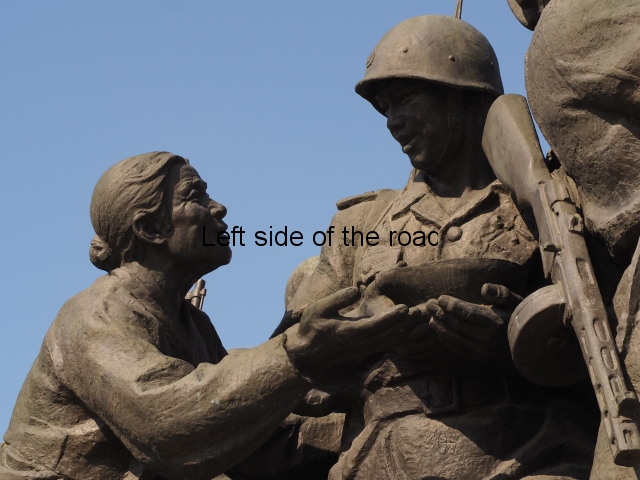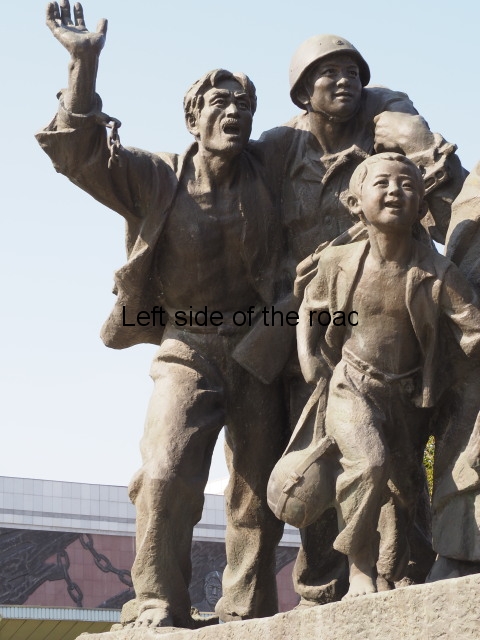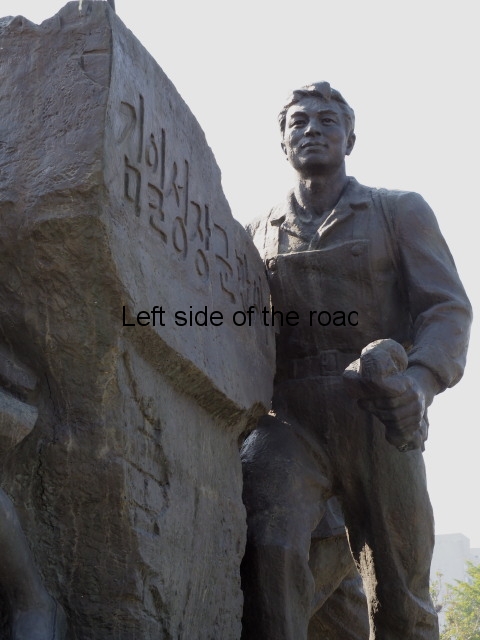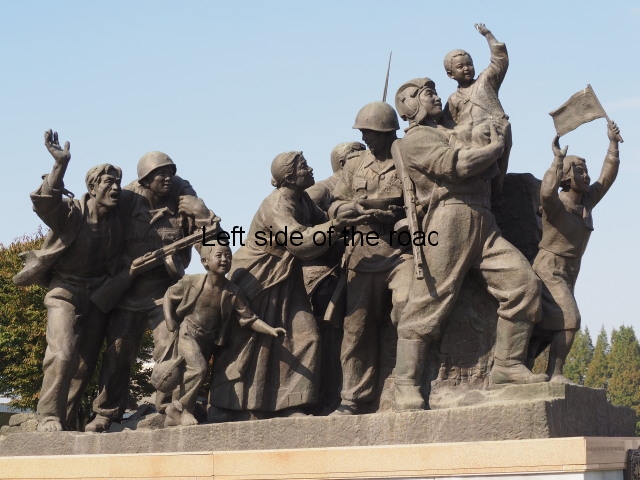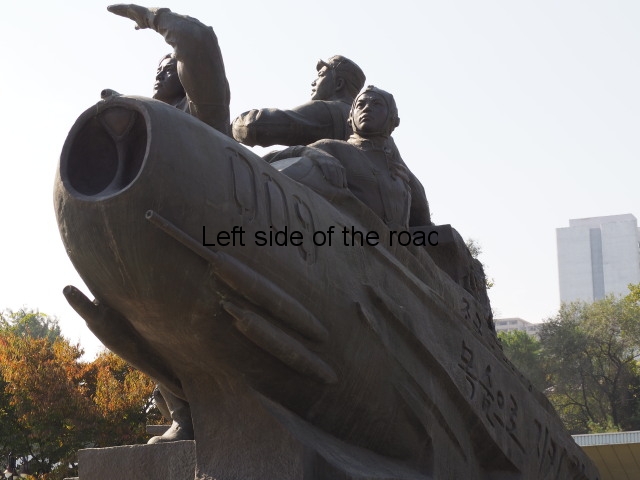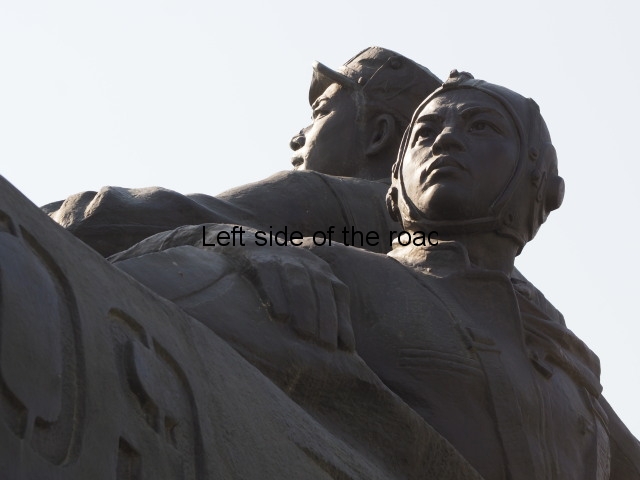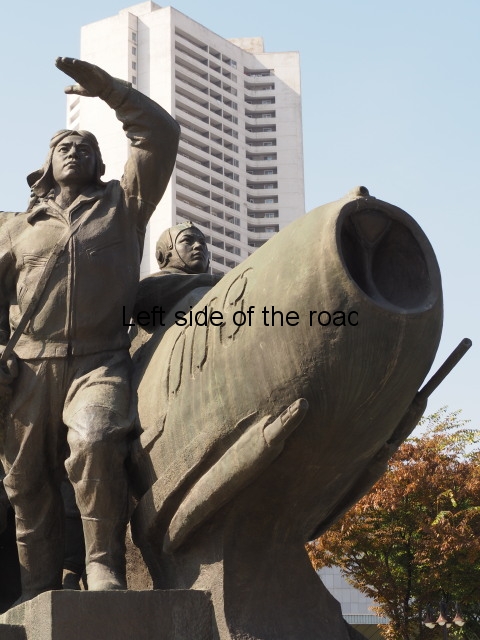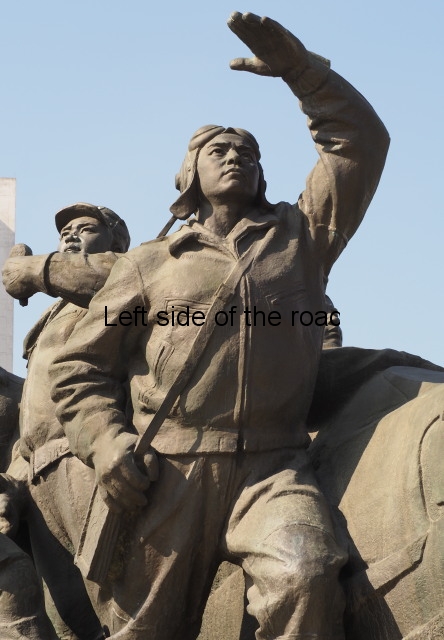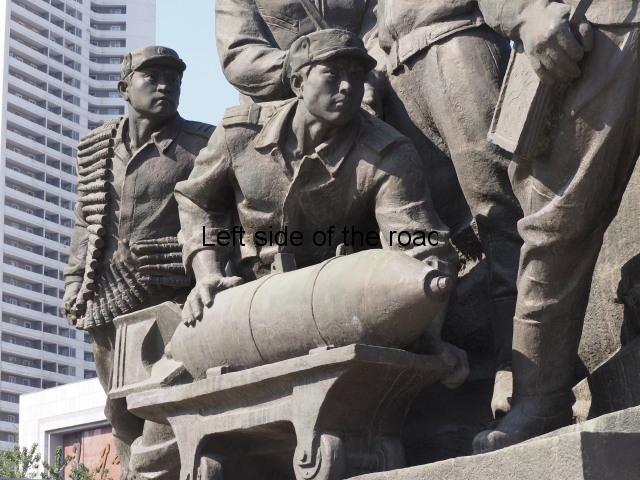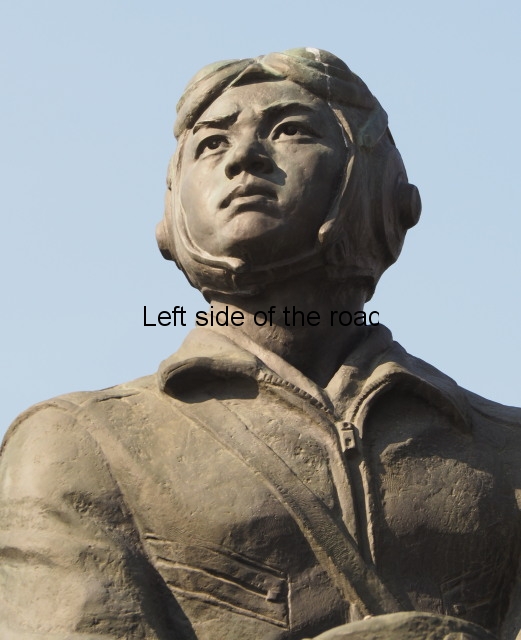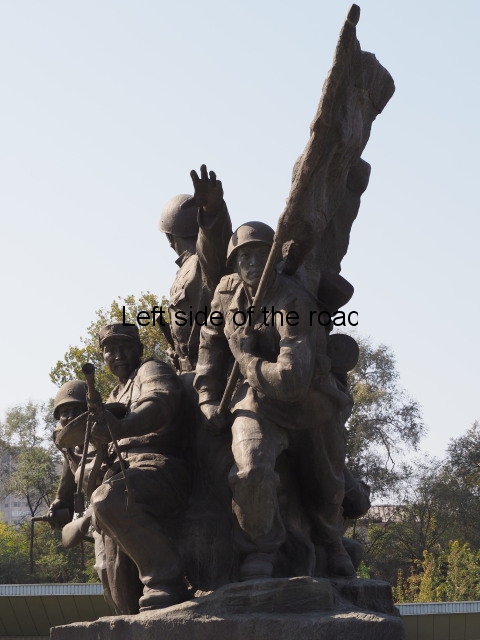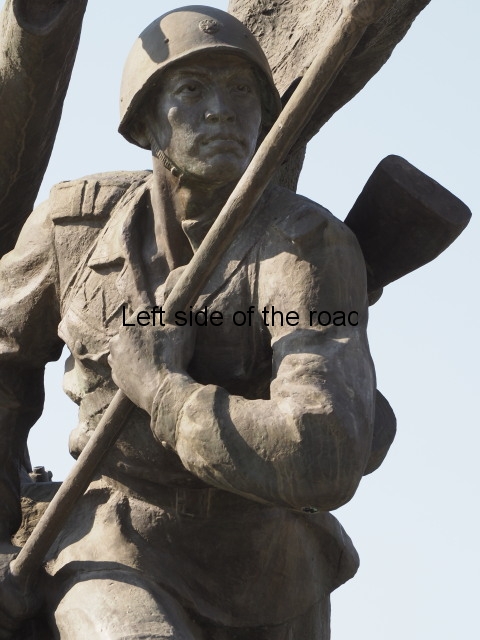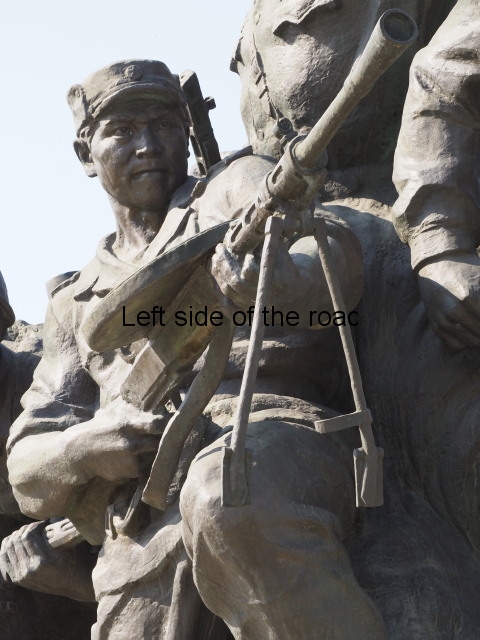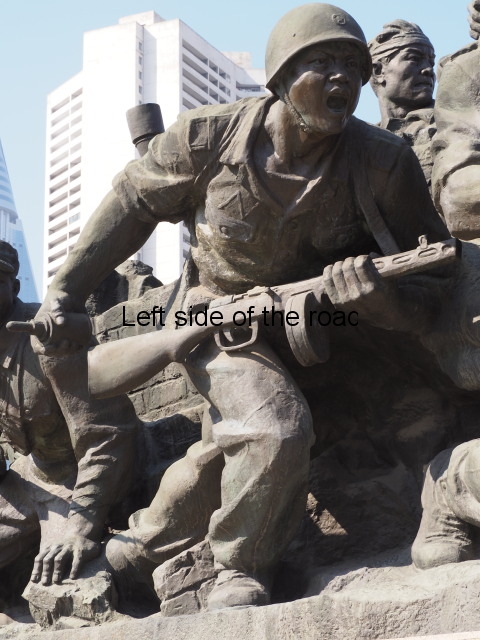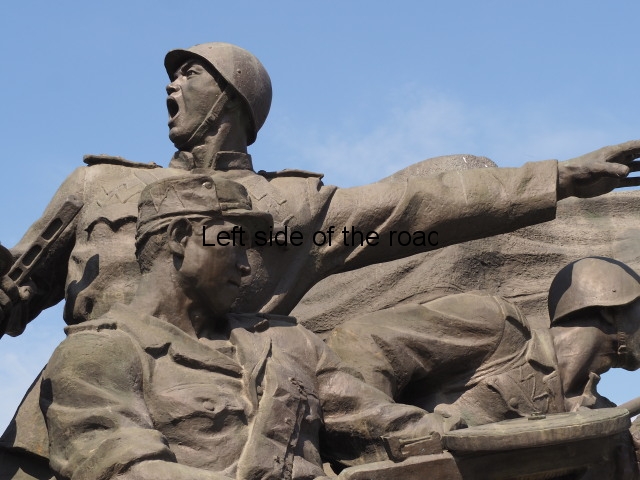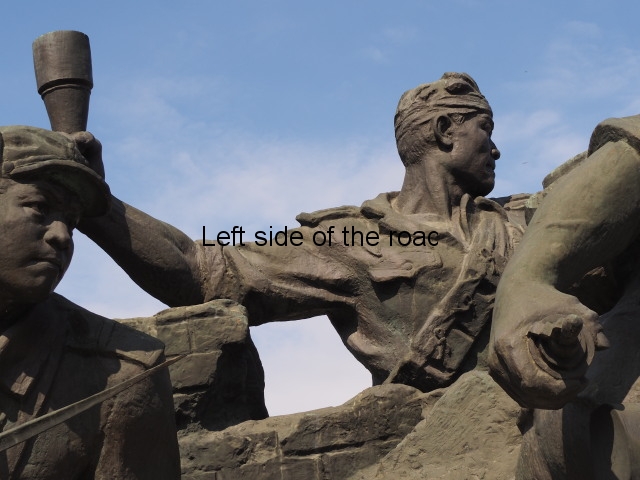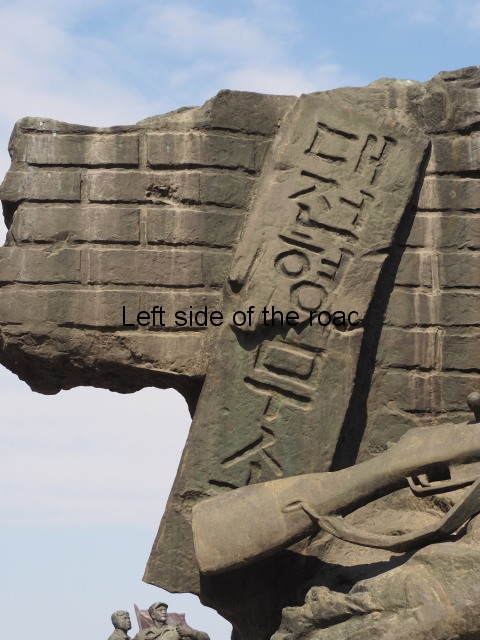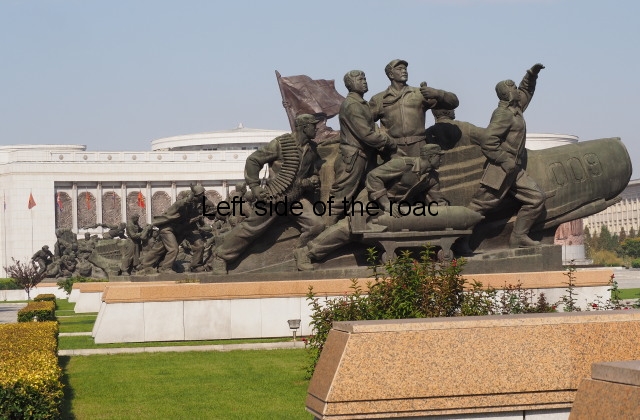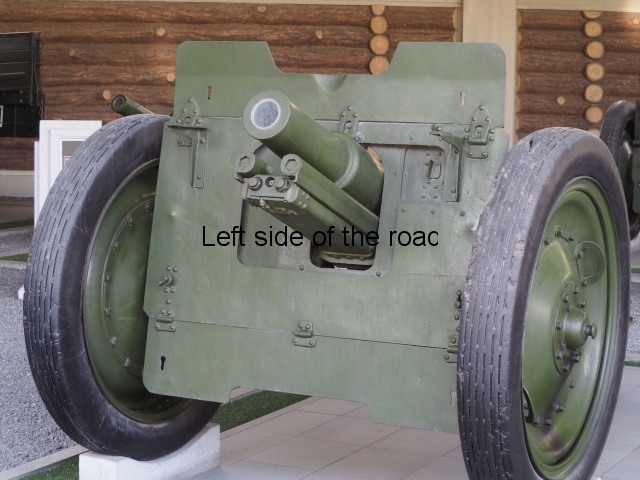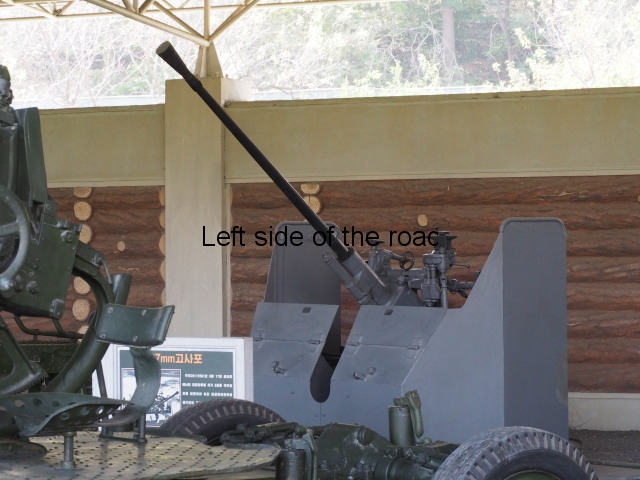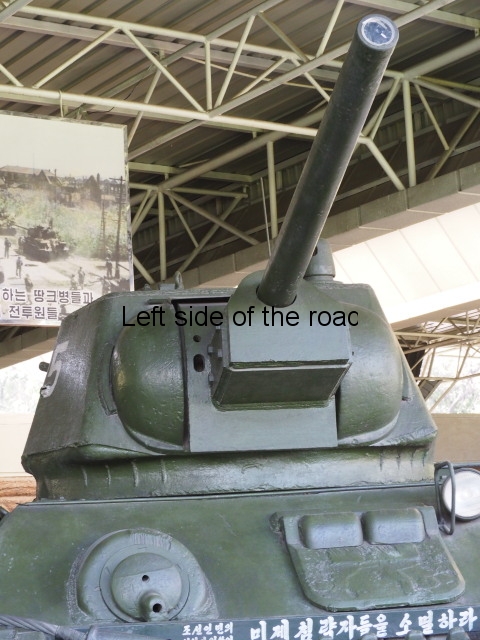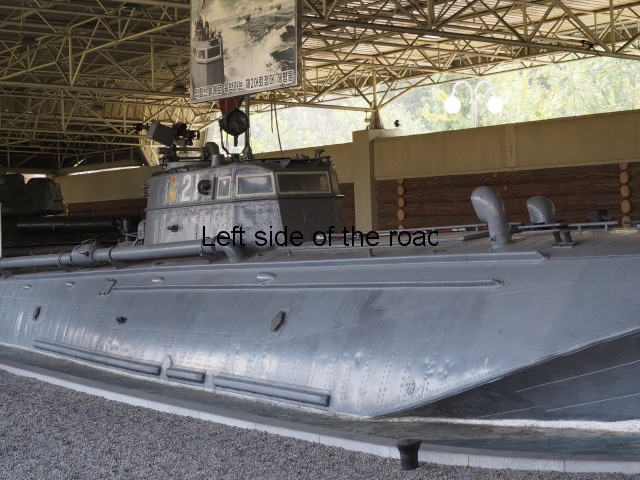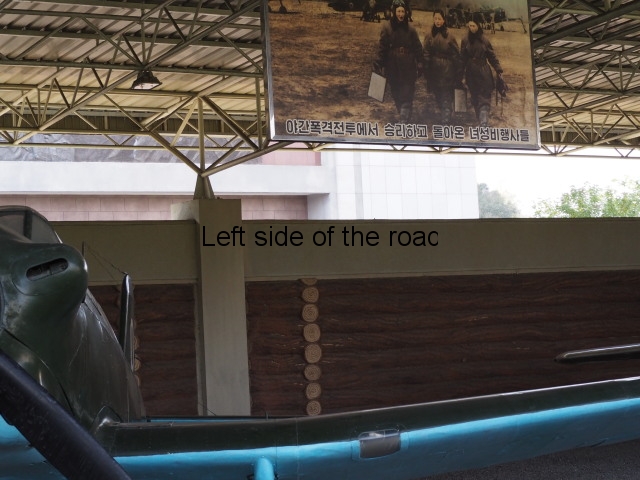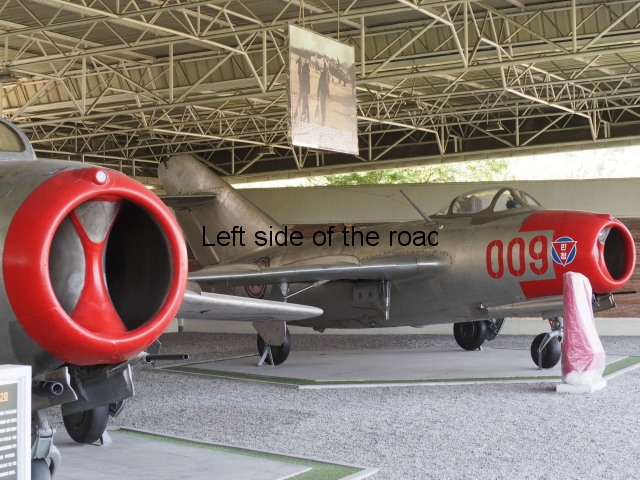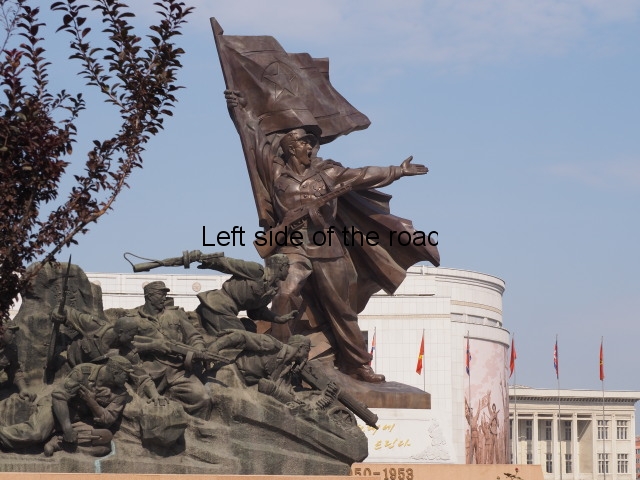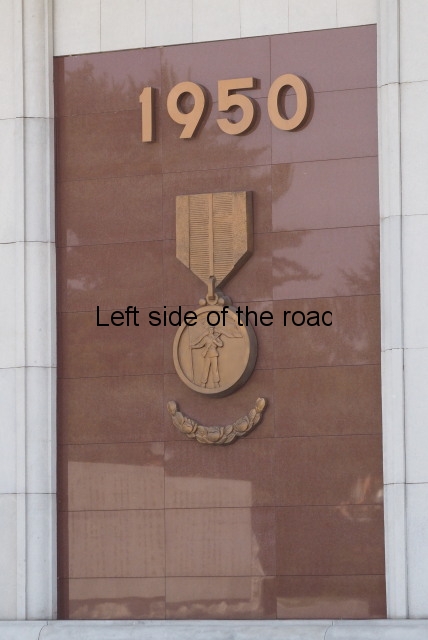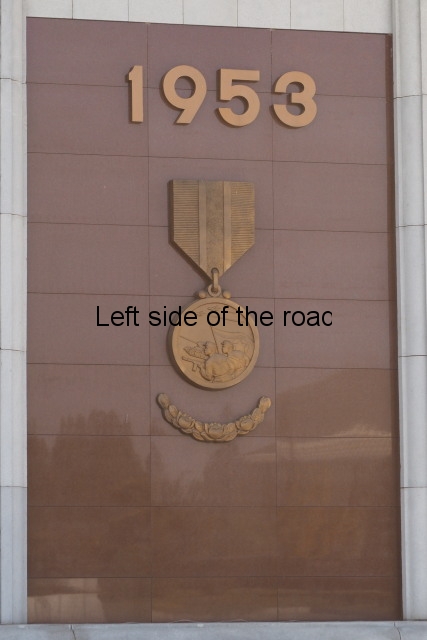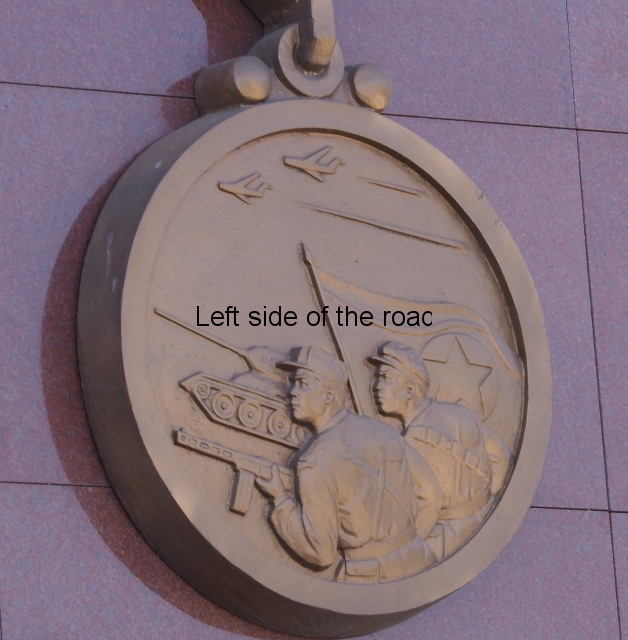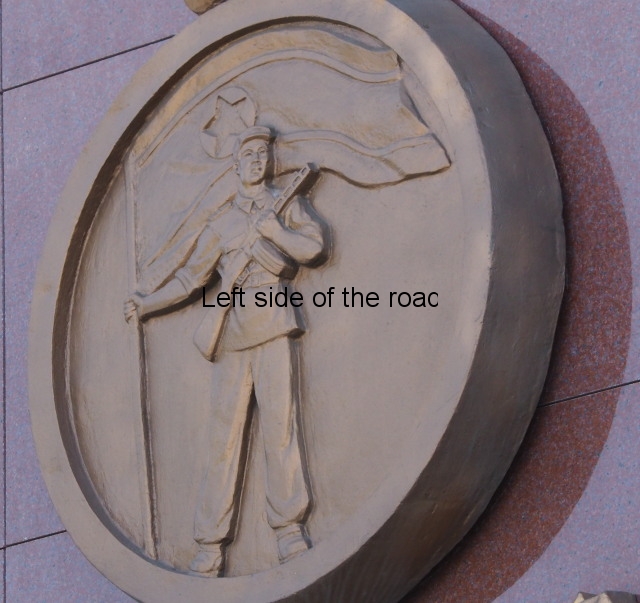
Pyongyang Sports Stadium
Ukraine – what you’re not told
Contemporary DPRK
From the publications on this page you will be able to get an idea of how the Democratic People’s Republic of Korea presents itself to the world in the 2020s (as well as some earlier material).
I am a Korean – the story of the World Professional Wrestling Champion Rikidozan, Ri Ho In, Foreign Languages Publishing House, Pyongyang, 1989, 133 pages.
Sightseeing Guide to Korea, Foreign Languages Publishing House, Pyongyang, 1991, 95 pages.
‘A Postmodern Interpretation of North Korean Juche Thought’, by Eun Hee Shin, Assistant Professor of Religion, Simpson College, USA, ND, but probably around 2002, 13 pages.
Tok Island-Land of Korea, Foreign Languages Publishing House, Pyongyang, Juche 98 (2009), 99 pages.
Korea in the 21st Century, Ri Song Hwan, Foreign Languages Publishing House, Pyongyang, Juche 101 (2012), 76 pages.
Hsiu water Centre, Foreign Languages Publishing House, Pyongyang, Juche 103 (2014), 108 pages.
Panorama of Pyongyang, Foreign Languages Publishing House, Pyongyang, Juche 103 (2014), 124 pages.
Mangyongdae School Children’s Palace, Foreign Languages Publishing House, Pyongyang, Juche 105 (2016), 34 pages.
Panmunjom, leaflet, Foreign Languages Publishing House, Pyongyang, Juche 105 (2016), 2 pages.
People’s Dreams and Flowers, Foreign Languages Publishing House, Pyongyang, Juche 105 (2016), 105 pages.
Songdowon International Childrenʼs Camp, Foreign Languages Publishing House, Pyongyang, Juche 105 (2016), 20 pages.
Pyongyang Middle School for Orphans, leaflet, Foreign Languages Publishing House, Pyongyang, Juche 105 (2016), 2 pages.
Sci-Tech Complex, Foreign Languages Publishing House, Pyongyang, Juche 105 (2016), 35 pages.
Ryugyong Dental Hospital, leaflet, Foreign Languages Publishing House, Pyongyang, Juche 106 (2017), 2 pages.
Wonsan International Friendship Air Festival, leaflet, Foreign Languages Publishing House, Pyongyang, Juche 106 (2017), 2 pages.
Mangyongdae Children’s Camp, So Chung Sim, Foreign Languages Publishing House, Pyongyang, Juche 106 (2017), 13 pages.
Sinuiju Ponbu Kindergarten, leaflet, Foreign Languages Publishing House, Pyongyang, Juche 106 (2017), 2 pages.
Affection and Devotion, Foreign Languages Publishing House, Pyongyang, Juche 108 (2019), 56 pages.
For the People’s Wellbeing 2018, Foreign Languages Publishing House, Pyongyang, Juche 108 (2019), 57 pages.
Historical Traditions, Flower Garden of Friendship, Relations between the DPRK and the Sociaslist Republic of Vietnam, Foreign Languages Publishing House, Pyongyang, Juche 108 (2019), 30 pages.
Korea in Kim Jong Un’s Era, Foreign Languages Publishing House, Pyongyang, Juche 108 (2019), 96 pages.
Leader and Education, Foreign Languages Publishing House, Pyongyang, Juche 108 (2019), 122 pages.
Take care of the rising generation, Foreign Languages Publishing House, Pyongyang, Juche 108 (2019), 78 pages.
National Symbols of the DPRK, Foreign Languages Publishing House, Pyongyang, Juche 108 (2019), 56 pages.
2020, a Year of Affection for People, Foreign Languages Publishing House, Pyongyang, Juche 109 (2020), 71 pages.
City of Samjiyon, Foreign Languages Publishing House, Pyongyang, Juche 109 (2020), 19 pages.
Democratic People’s Republic of Korea, Foreign Languages Publishing House, Pyongyang, Juche 109 (2020), 69 pages.
Education in the DPRK, Foreign Languages Publishing House, Pyongyang, Juche 109 (2020), 76 pages.
For People’s Wellbeing 2016-2020, dedicated to the Eighth Congress of the WPK, Foreign Languages Publishing House, Pyongyang, Juche 109 (2020), 133 pages.
For Strengthening the National Defence Capability, dedicated to the Eighth Congress of the Workers’ Party of Korea, Foreign Languages Publishing House, Pyongyang, Juche 109 (2020), 63 pages.
Jungpyong Vegetable Greenhouse Farm and Tree Nursery, Foreign Languages Publishing House, Pyongyang, Juche 109 (2020), 13 pages.
On the road for Independence and Prosperity by dint of Self-reliance in 2019, Foreign Languages Publishing House, Pyongyang, Juche 109 (2020), 99 pages.
Phalhyang Dam of the Orangchon Power Station, leaflet, Foreign Languages Publishing House, Pyongyang, Juche 109 (2020), 2 pages.
Pyongyang Golf Course, Foreign Languages Publishing House, Pyongyang, Juche 109 (2020), 19 pages.
Today’s Pyongyang, postcards, Foreign Languages Publishing House, Pyongyang, Juche 109 (2020), 23 pages.
Yangdok Hot Spring Resort, leaflet, Foreign Languages Publishing House, Pyongyang, Juche 109 (2020), 2 pages.
Yangdok Hot Spring Resort, Foreign Languages Publishing House, Pyongyang, ND but probably Juche 109 (2020), 85 pages.
Thongchon Holiday Camp for Diplomatic Corps, Foreign Languages Publishing House, Pyongyang, Juche 110 (2021), 9 pages.
Myohyangsan Medical Appliances Factory, Foreign Languages Publishing House, Pyongyang, Juche 110 (2021), 11 pages.
Korea Machinery Trading Corporation, Foreign Languages Publishing House, Pyongyang, Juche 110 (2021), 5 pages.
Pyongyang Elevator Joint Venture Company, Foreign Languages Publishing House, Pyongyang, Juche 110 (2021), 7 pages.
Pyongyang University of Transport, Foreign Languages Publishing House, Pyongyang, Juche 110 (2021), 13 pages.
Pyongyang Hotel, Foreign Languages Publishing House, Pyongyang, Juche 110 (2021), 14 pages.
Pyongyang in Kim Jong Un’s era, Foreign Languages Publishing House, Pyongyang, Juche 110 (2021), 49 pages.
Sacred mountain of Korea, Foreign Languages Publishing House, Pyongyang, Juche 110 (2021), 49 pages.
Samjiyon City Peopleʼs Hospital, Foreign Languages Publishing House, Pyongyang, Juche 110 (2021), 17 pages.
The Businessman – A Patriot, Foreign Languages Publishing House, Pyongyang, Juche 110 (2021), 40 pages.
2020 – A year of trials and struggles, Foreign Languages Publishing House, Pyongyang, Juche 110 (2021), 36 pages.
Changgwangsan Hotel, Foreign Languages Publishing House, Pyongyang, Juche 110 (2021), 13 pages.
For the future of the country, Foreign Languages Publishing House, Pyongyang, Juche 110 (2021), 101 pages.
Mangyongdae, Foreign Languages Publishing House, Pyongyang, Juche 110 (2021), 19 pages.
Scenery of Mt Paektu, Foreign Languages Publishing House, Pyongyang, Juche 111 (2022), 95 pages.
For Fresh Development of Socialist Construction 2021, Foreign Languages Publishing House, Pyongyang, Juche 110, (2021), 107 pages.
DPRK-PRC Friendship from One Century into the Next, dedicated to the 80th anniversary of the birth of Kim Jong Il, Foreign Languages Publishing House, Pyongyang, Juche 111 (2022), 119 pages.
Writing a New Chapter in the History of DPRK-Russia Friendship, dedicated to the 80th anniversary of the birth of Kim Jong Il, Foreign Languages Publishing House, Pyongyang, Juche 111 (2022), 123 pages.
Ten years of great achievements, Foreign Languages Publishing House, Pyongyang, Juche 111, (2022), 104 pages.
A Great Chronicle of DPRK-Russia Friendship, dedicated to the 110th Anniversary of the birth of President Kim Il Sung, Foreign Languages Publishing House, Pyongyang, Juche 111, (2022), 113 pages.
Immortal History of DPRK-PRC Friendship, dedicated to the 110th Anniversary of the birth of President Kim Il Sung, Foreign Languages Publishing House, Pyongyang, Juche 111 (2022), 167 pages.
Grand Festivals in Praise of the Great Men, Foreign Languages Publishing House, Pyongyang, Juche 111 (2022), 99 pages.
Hangsong Economic Association, Foreign Languages Publishing House, Pyongyang, Juche 111 (2022), 12 pages.
Korea Puksong Trading Corporation, Foreign Languages Publishing House, Pyongyang, Juche 111 (2022), 15 pages.
Man’s Destiny and Juche Philosophy, Foreign Languages Publishing House, Pyongyang, Juche 111 (2022), 91 pages.
Pyongyang Analytic Technology Company, Foreign Languages Publishing House, Pyongyang, Juche 111 (2022), 16 pages.
University of Sciences, Foreign Languages Publishing House, Pyongyang, Juche 111 (2022), 14 pages.
Over 90 Days for Defending the People, Foreign Languages Publishing House, Pyongyang, Juche 111 (2022), 63 pages.
Changed City of Samjiyon, Foreign Languages Publishing House, Pyongyang, Juche 11 (2022), 46 pages.
DPRK, two articles against Soviet Revisionism, These are two articles by Rodong Sinmun, Organ of the CC of the Workers’ Party of Korea, November 8th Publishing House, Ottawa 2022, 135 pages.
Report on the crime of American Imperialists in spreading bacteria in Korea, this report was made public on April 23, 1952, by the Chinese People’s Commission for Investigating the Germ Warfare Crime of American Imperialists, November 8th Publishing House, Ottawa 2022, 42 pages.
Modern History of Korea, Kim Han Gil, November 8th Publishing House, Ottawa 2023, 581 pages.
The U.S. Imperialists started the Korean War, Candidate Academician Ho Jong Ho, Doctors Kang Sok Hui and Pak Thae Ho, November 8th Publishing House, Ottawa 2023, 305 pages.
DPRK, seven decades of creation and changes, November 8th Publishing House, Ottawa 2023, 162 pages.
2022: A Year Filled with Great Events, Foreign Languages Publishing House, Pyongyang, Juche 112 (2023), 199 pages.
Military Parade in Celebration of the 75th Founding Anniversary of the KPA, Foreign Languages Publishing House, Pyongyang, Juche 112 (2023), 52 pages.
2022: DPRK raising its profile, Foreign Languages Publishing House, Pyongyang, Juche 112 (2023), 70 pages.
Leading the Fatherland Liberation War to Victory, on the 70th anniversary of victory in the Fatherland Liberation War, FLPH, Pyongyang, Juche 112 (2023), 159 pages.
The Great Victorious War tells, FLPH, Pyongyang, Juche 112 (2023), 136 pages.
History and Culture of Kaesong, FLPH, Pyongyang, Juche 112 (2023), 64 pages.
Cradle of Happiness for the People, FLPH, Pyongyang, Juche 112 (2023), 190 pages.
Kim Jong Il – Anecdotes of his external activities (visits to Russia and China), FLPH, Pyongyang, Juche 112 (2023), 77 pages.
Mt Myohyang, FLPH, Pyongyang, Juche 112 (2023), 27 pages.
Journey of Devotion for the Good of the People, FLPH, Pyongyang, Juche 112 (2023), 116 pages.
2023 – Year of Great Changes and Transformations, FLPH, Pyongyang, Juche 113 (2024), 191 pages.
Paektu, Famous Mountain in Korea, (leaflet), FLPH, Pyongyang, Juche 113 (2024), 3 pages.
Mt Paektu Area, a series of 10 postcard of the area around Mount Paektu, FLPH, Pyongyang, Juche 113 (2024).
Mt Paektu, (leaflet), FLPH, Pyongyang, Juche 113 (2024), 3 pages.
The crop fields tell, FLPH, Pyongyang, Juche 113, (2024), 115 pages.
Mt. Kumgang, FLPH, Pyongyang, 2024, 73 pages.
Pyongyang, FLPH, Pyongyang, 2024, 173 pages.
2023 – Year of Transformations, FLPH, DPRK, 2024, 111 pages.



















